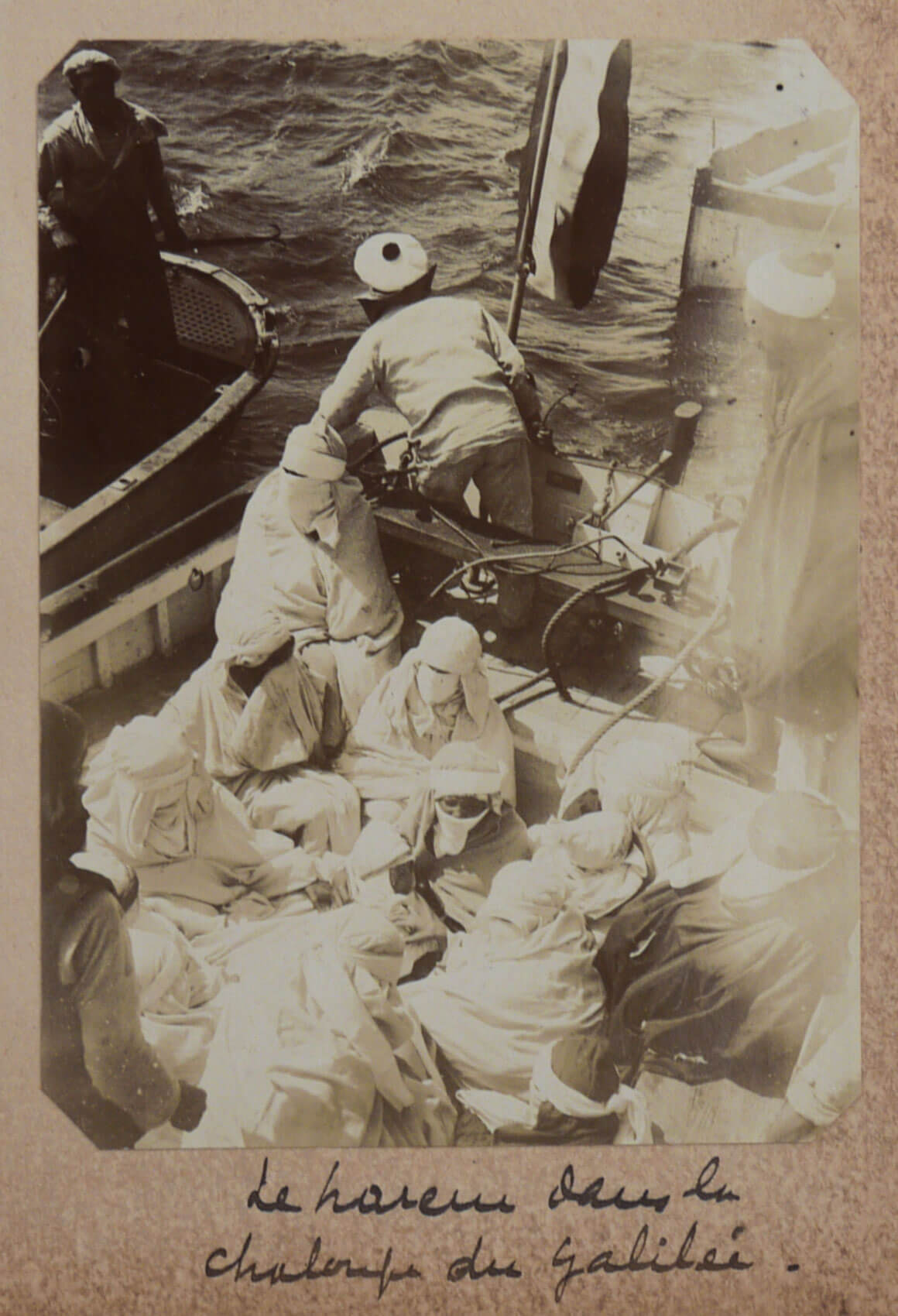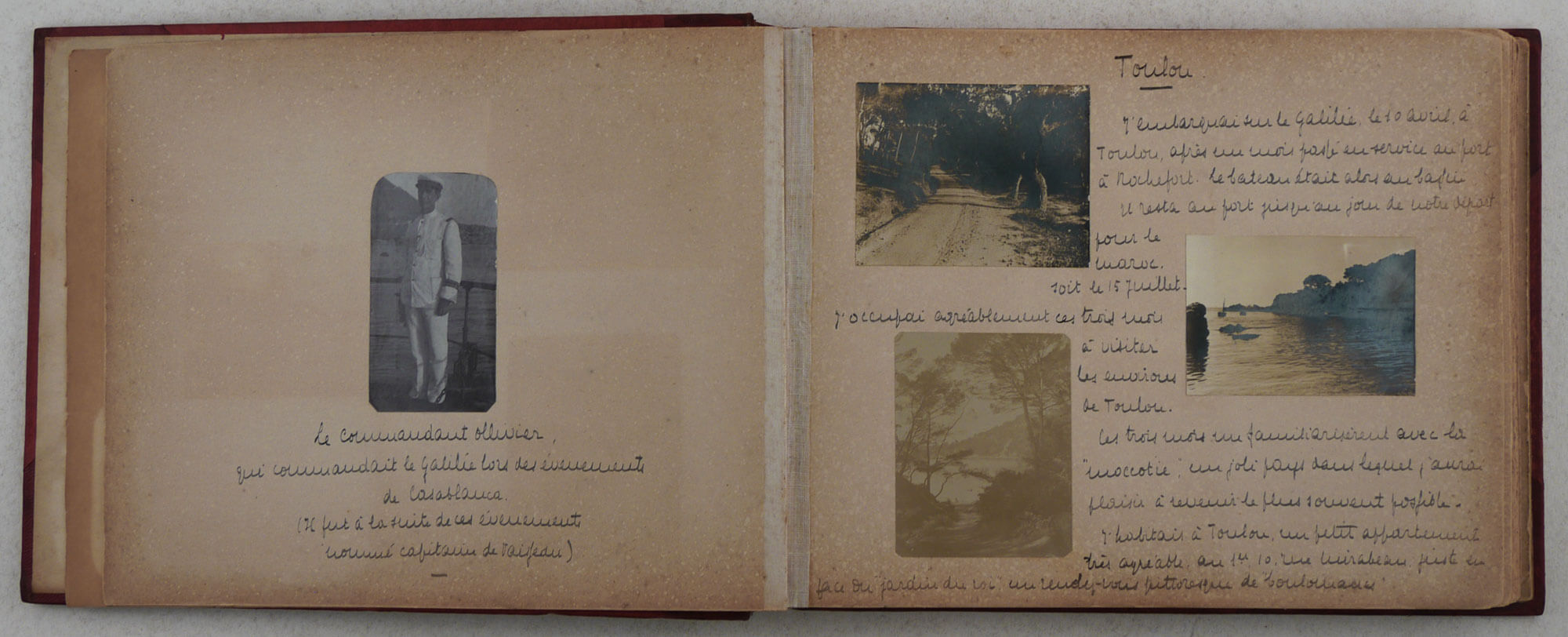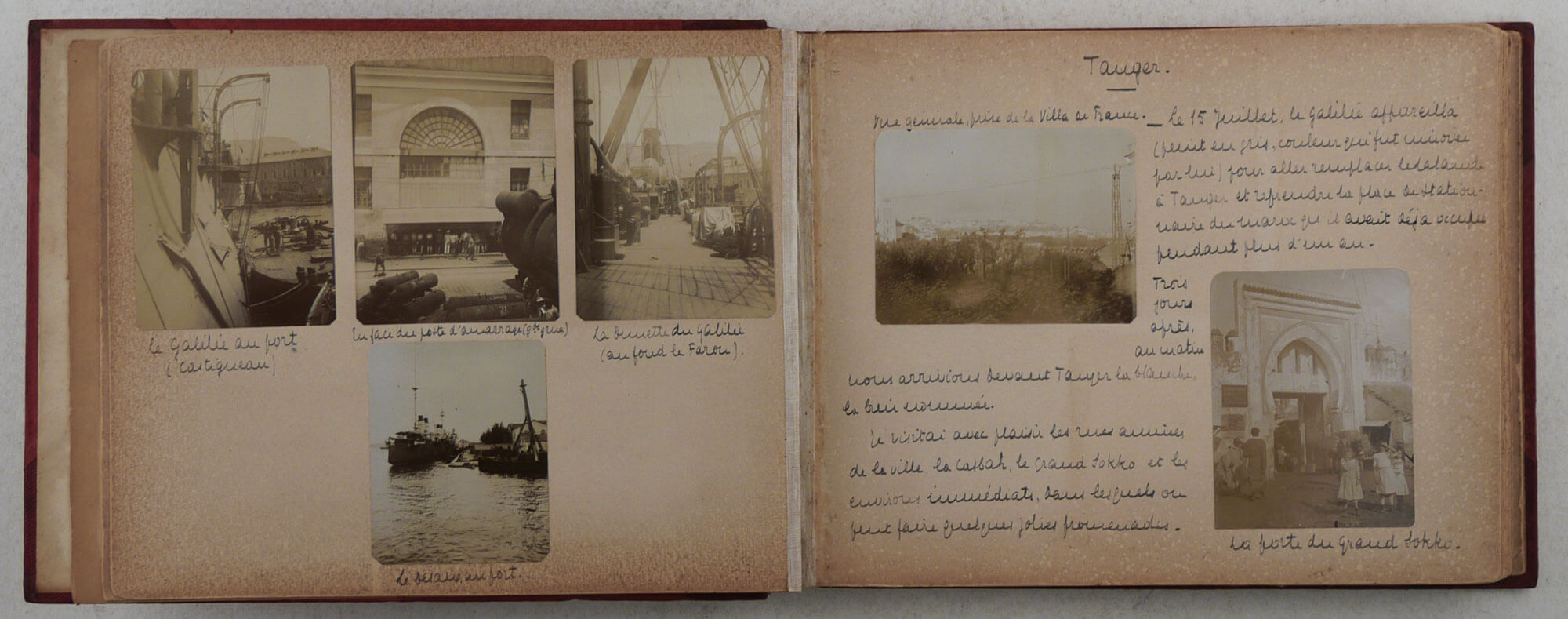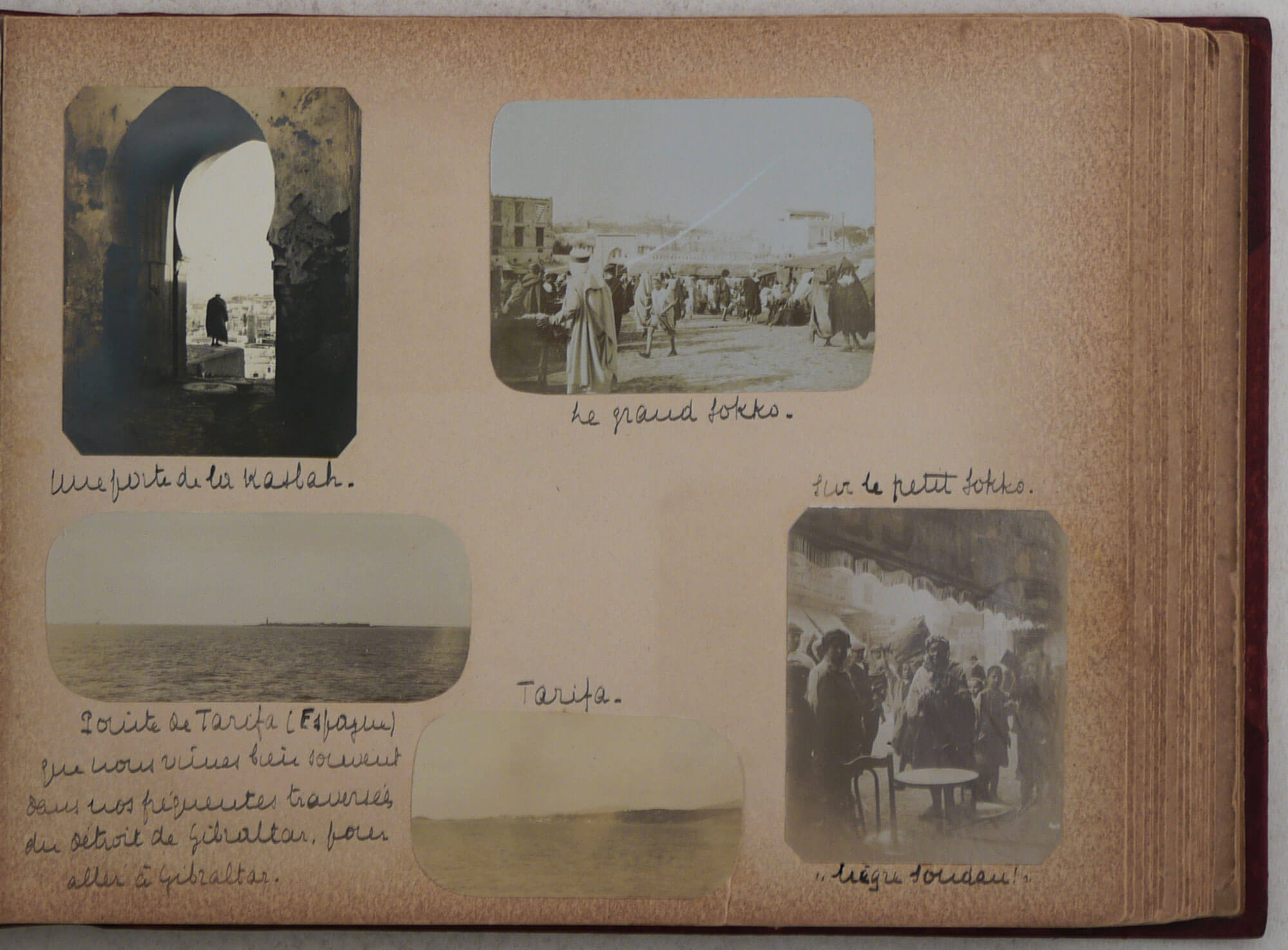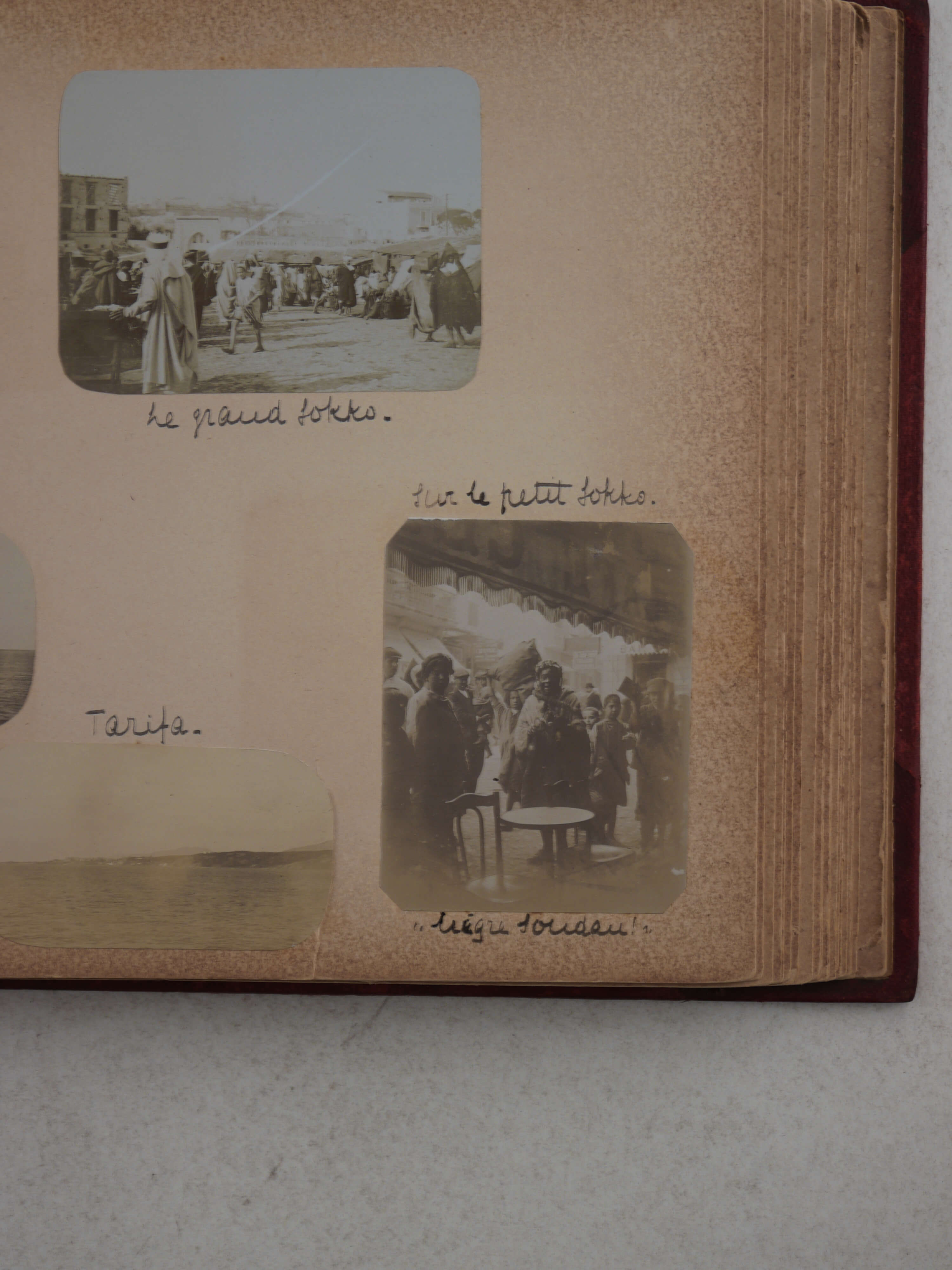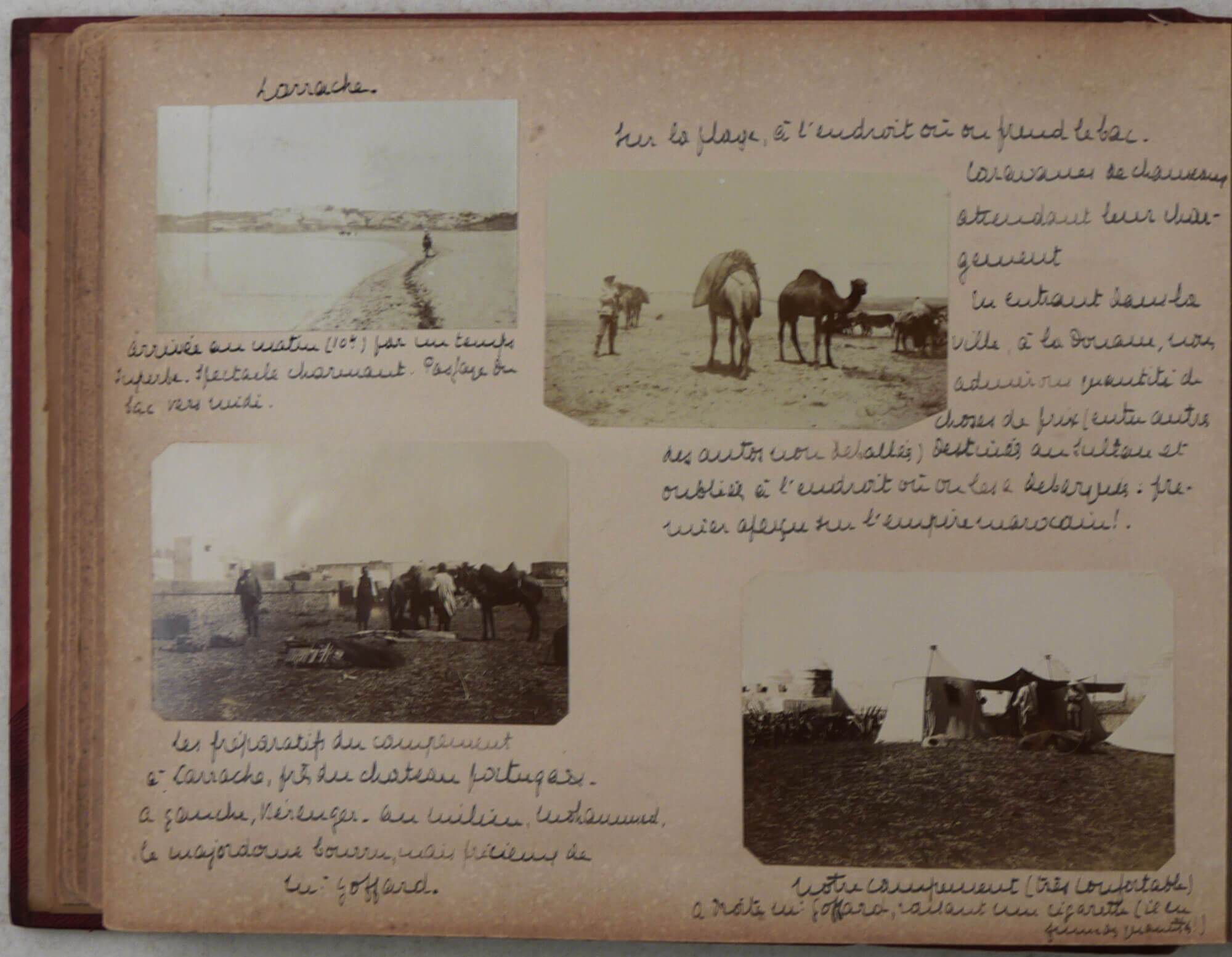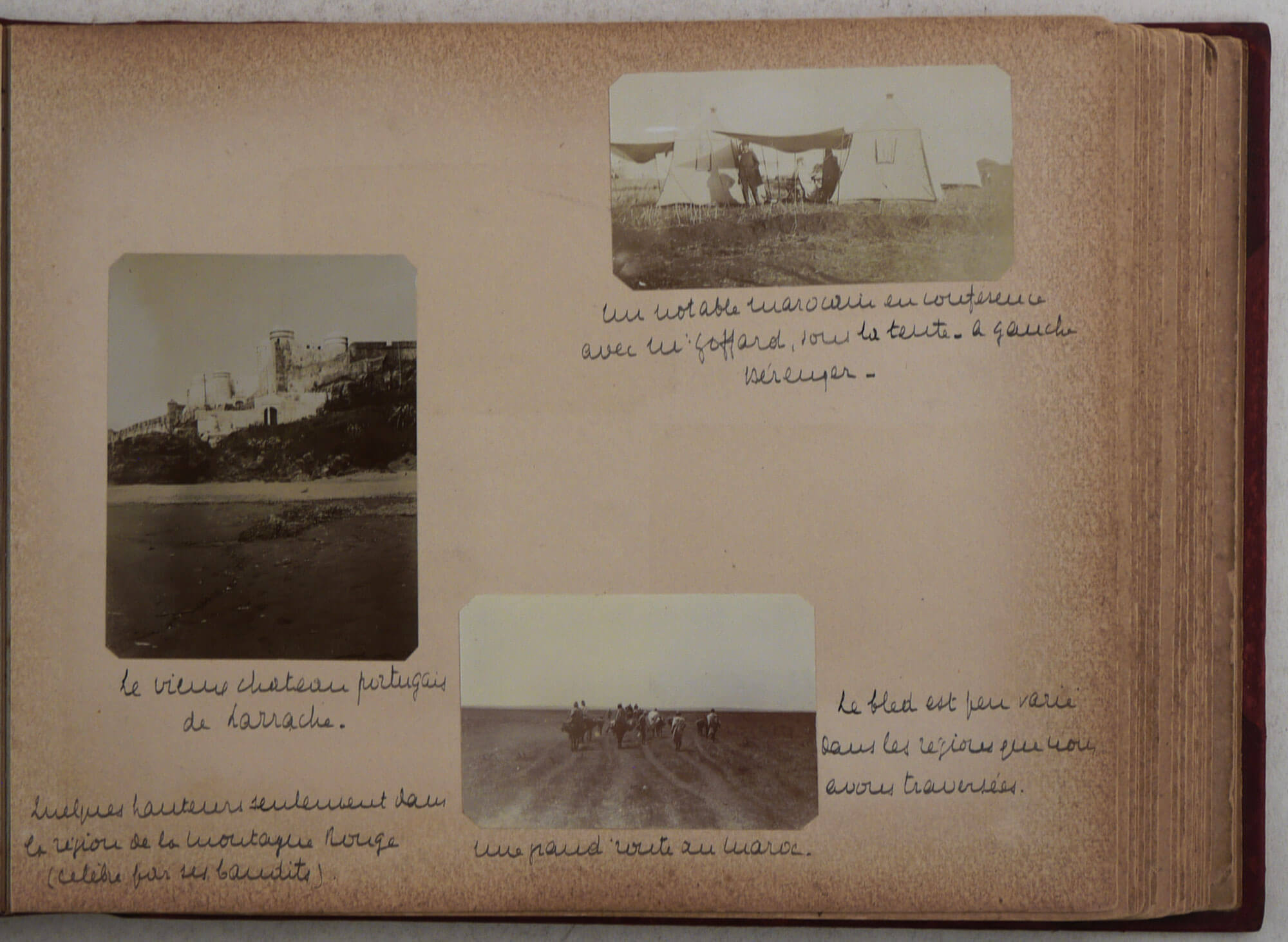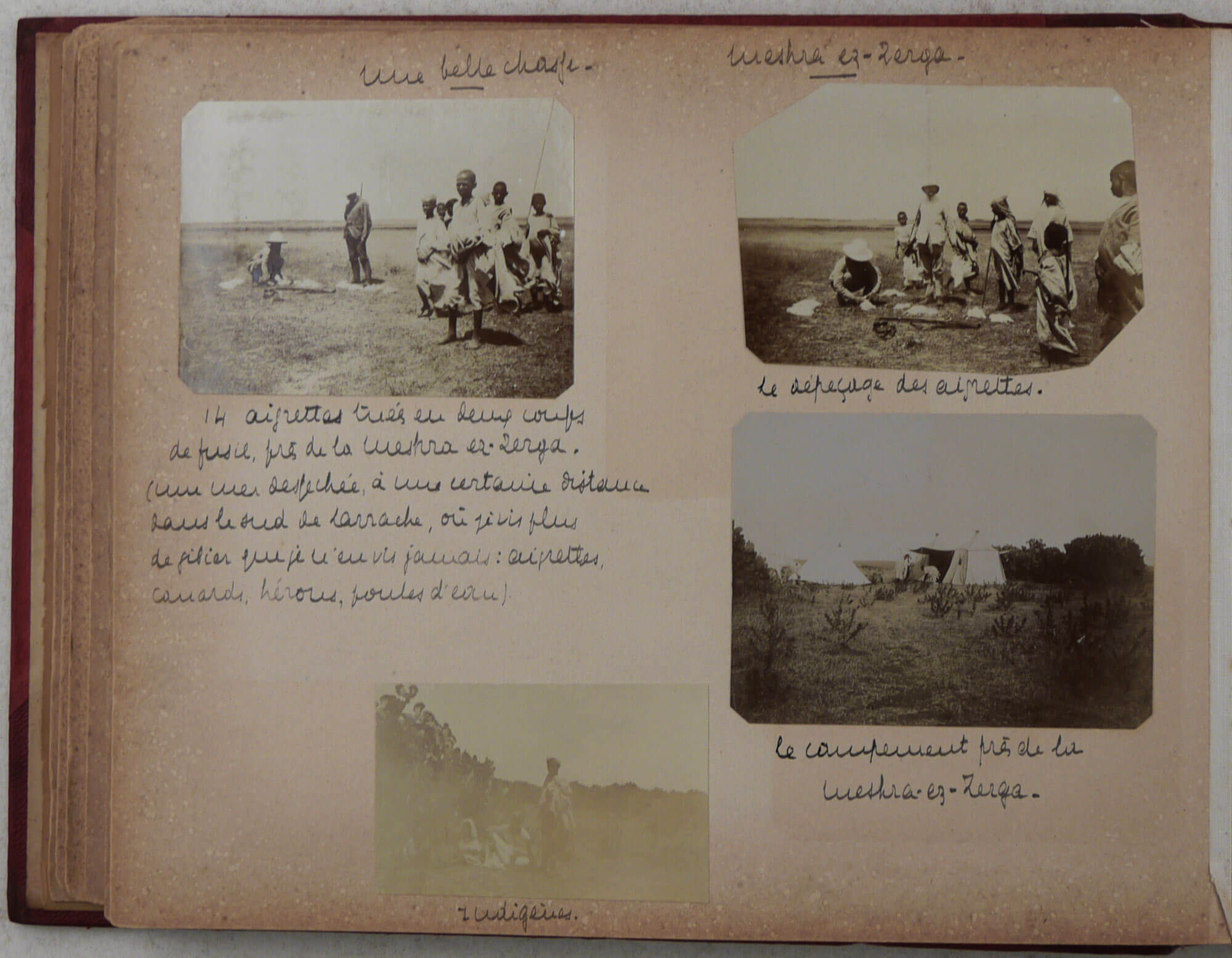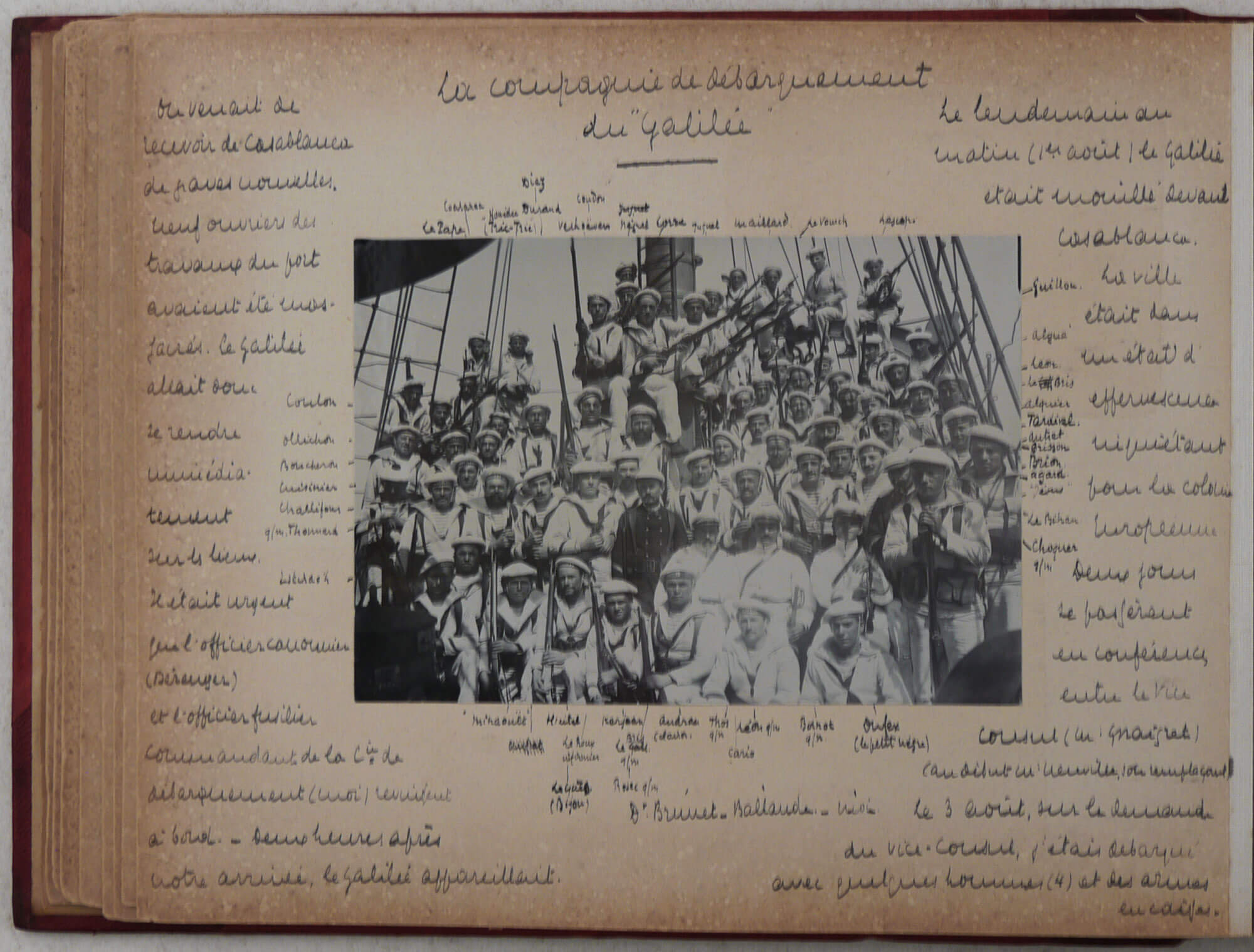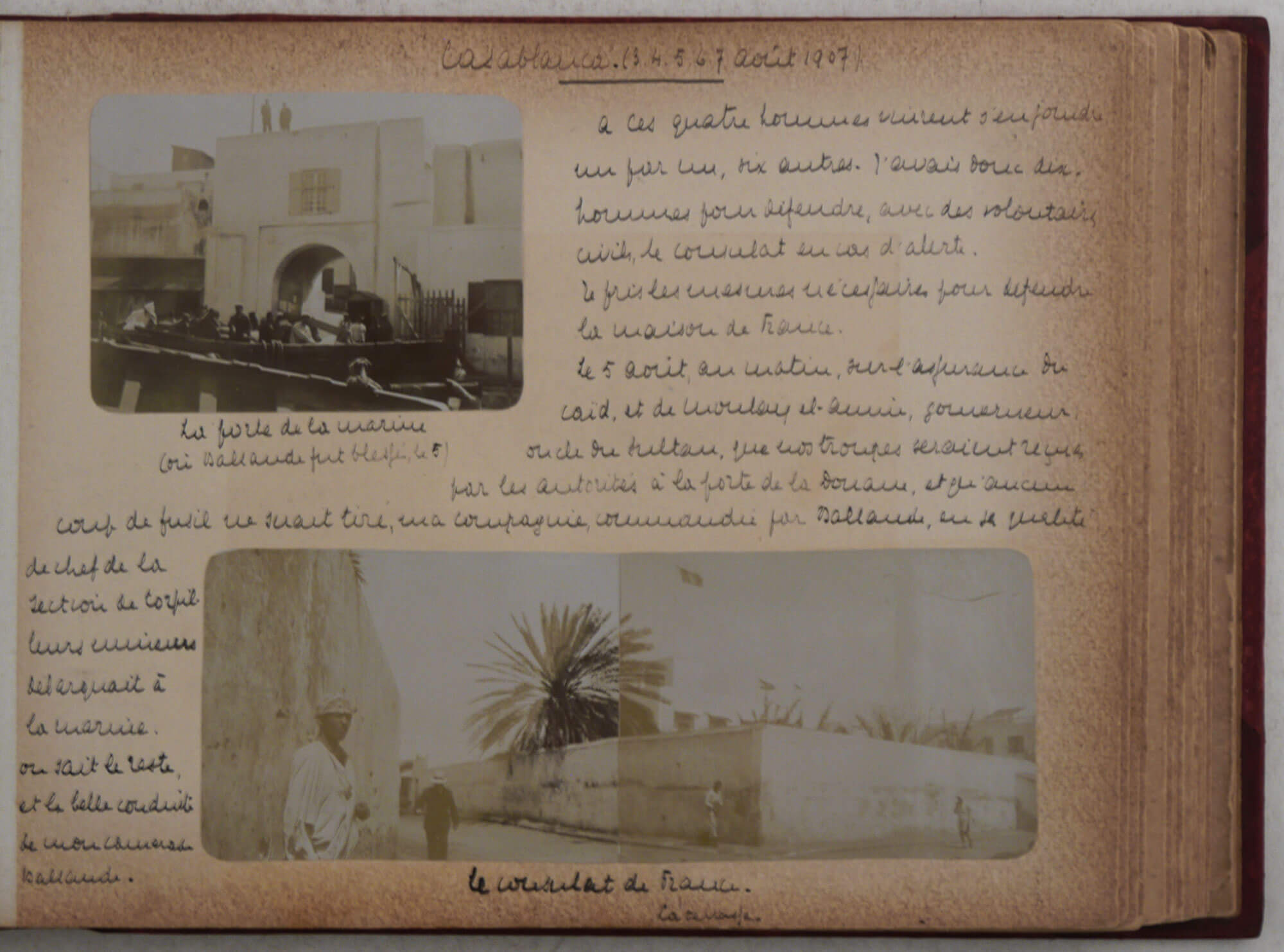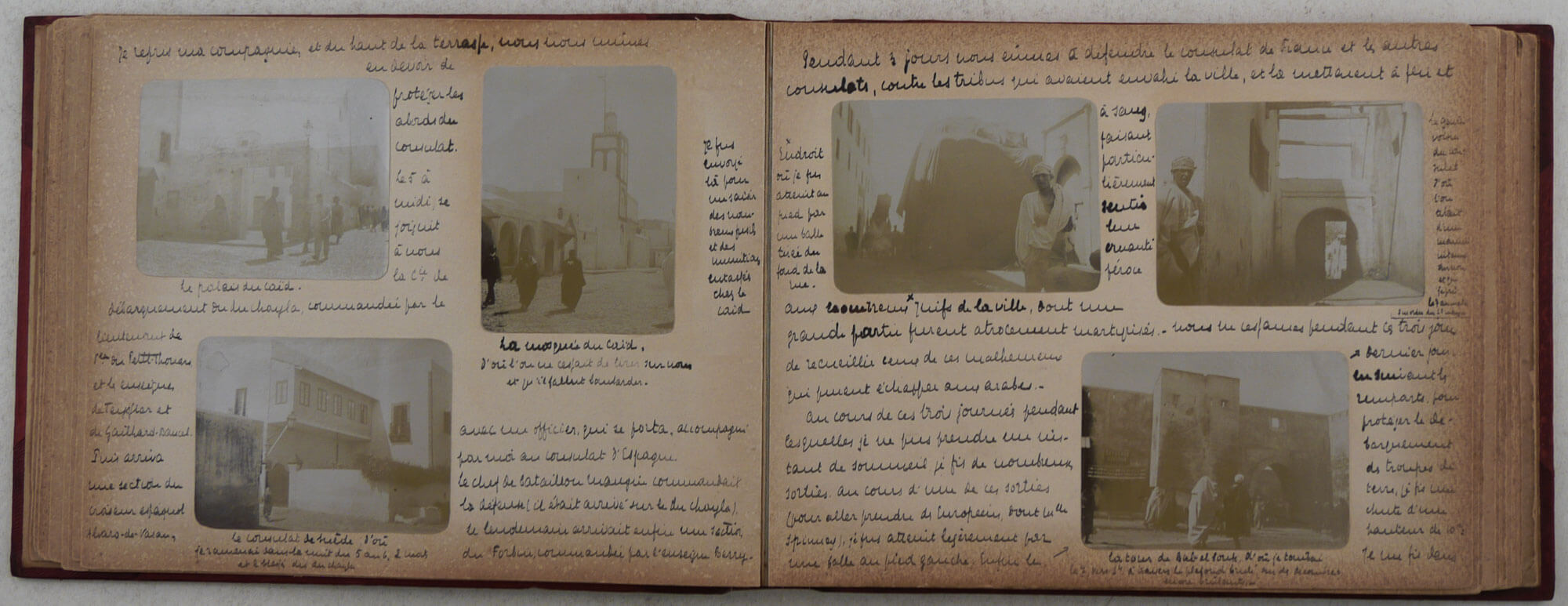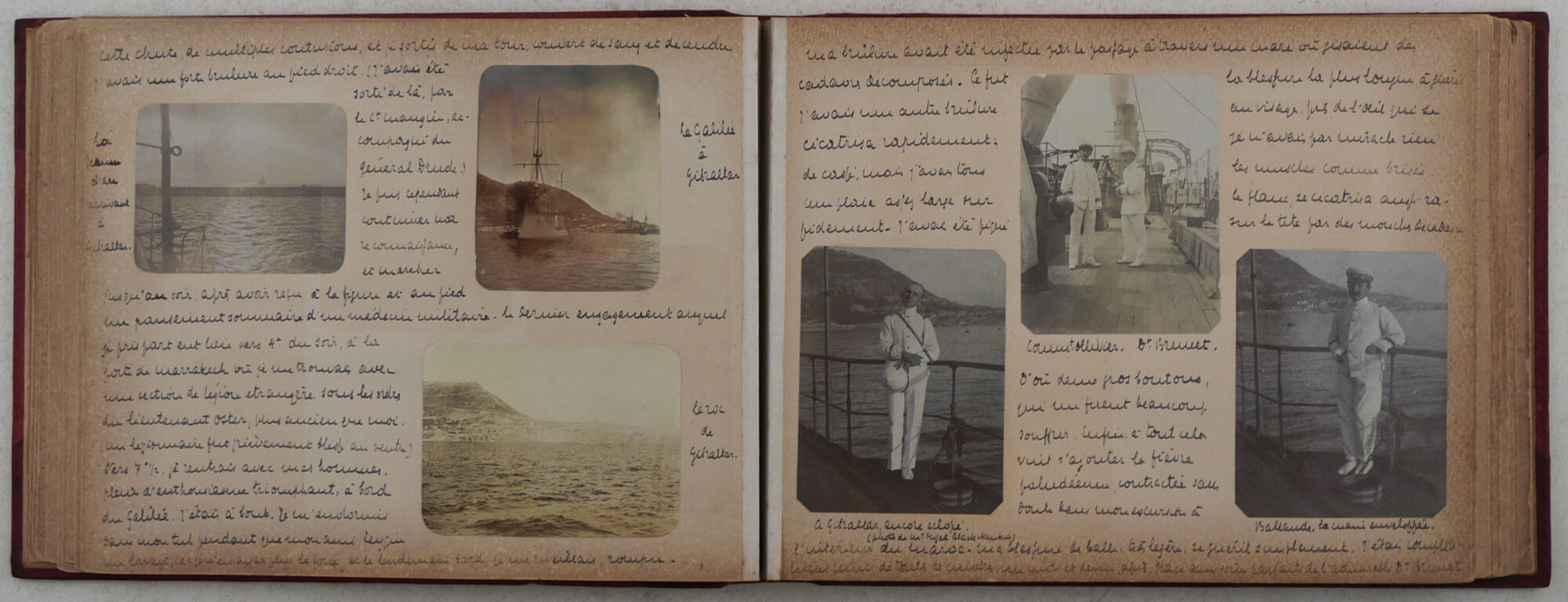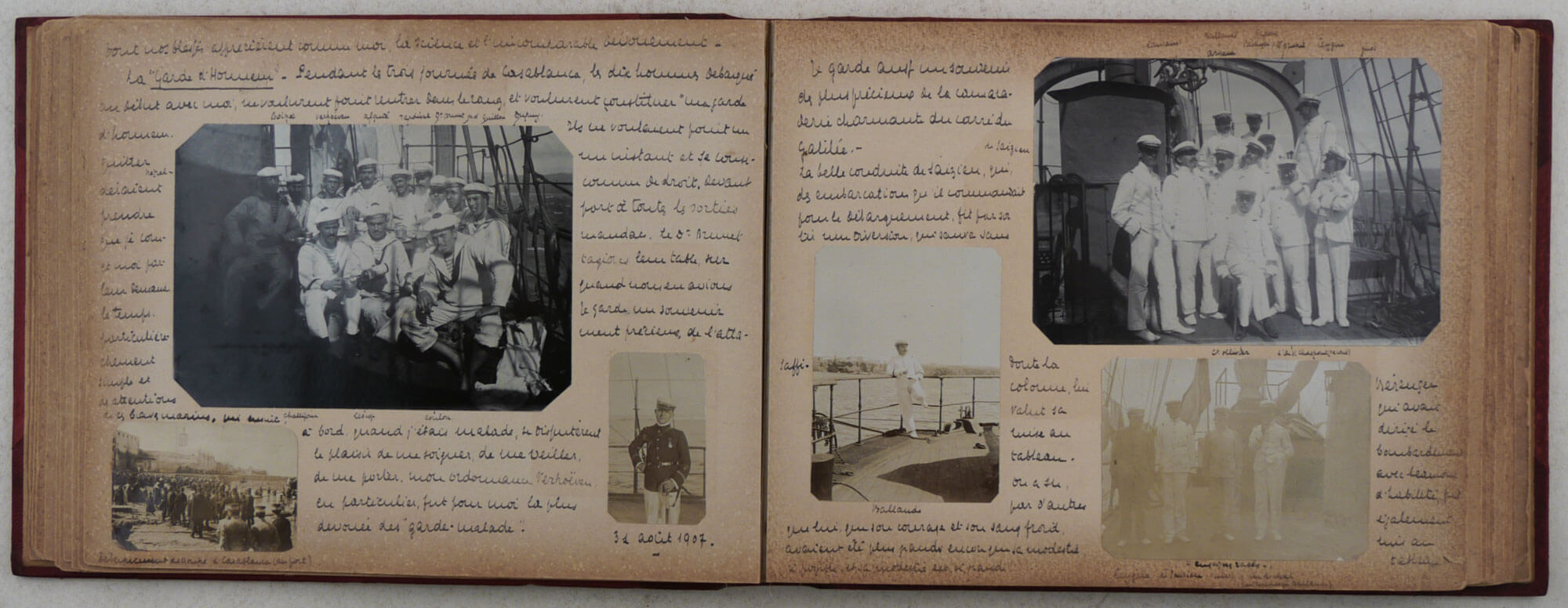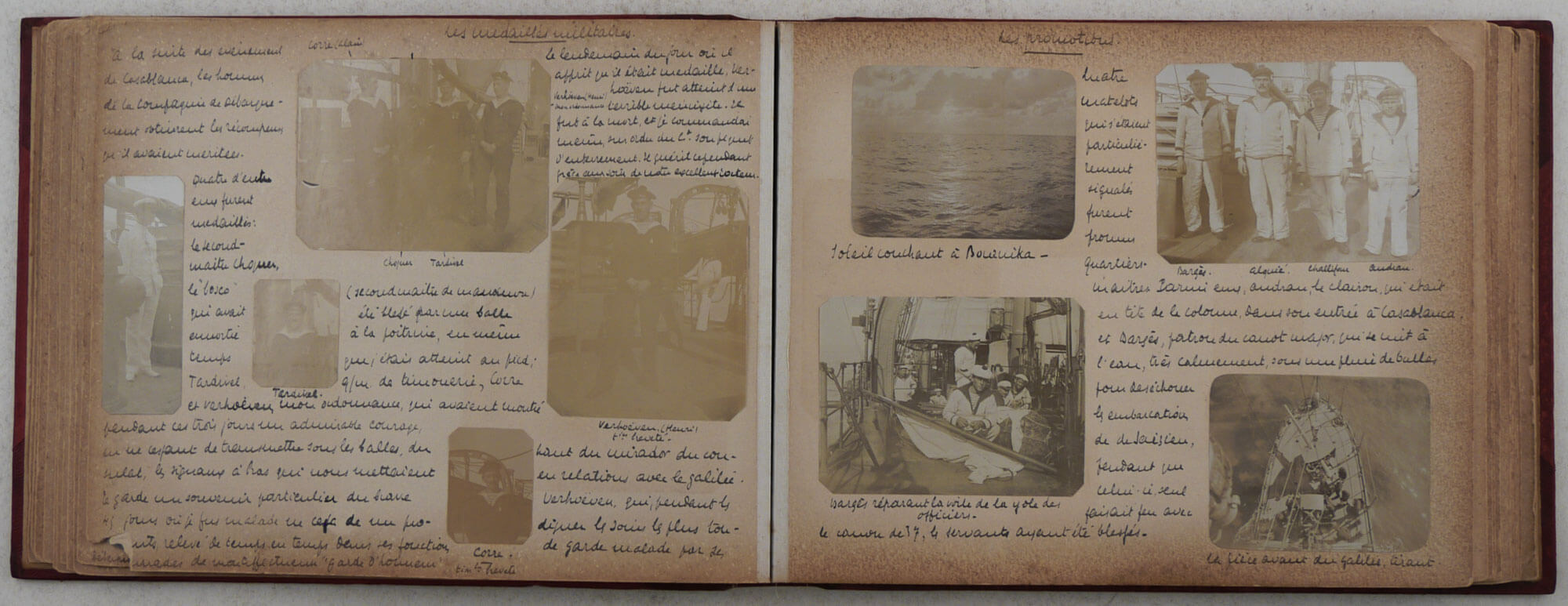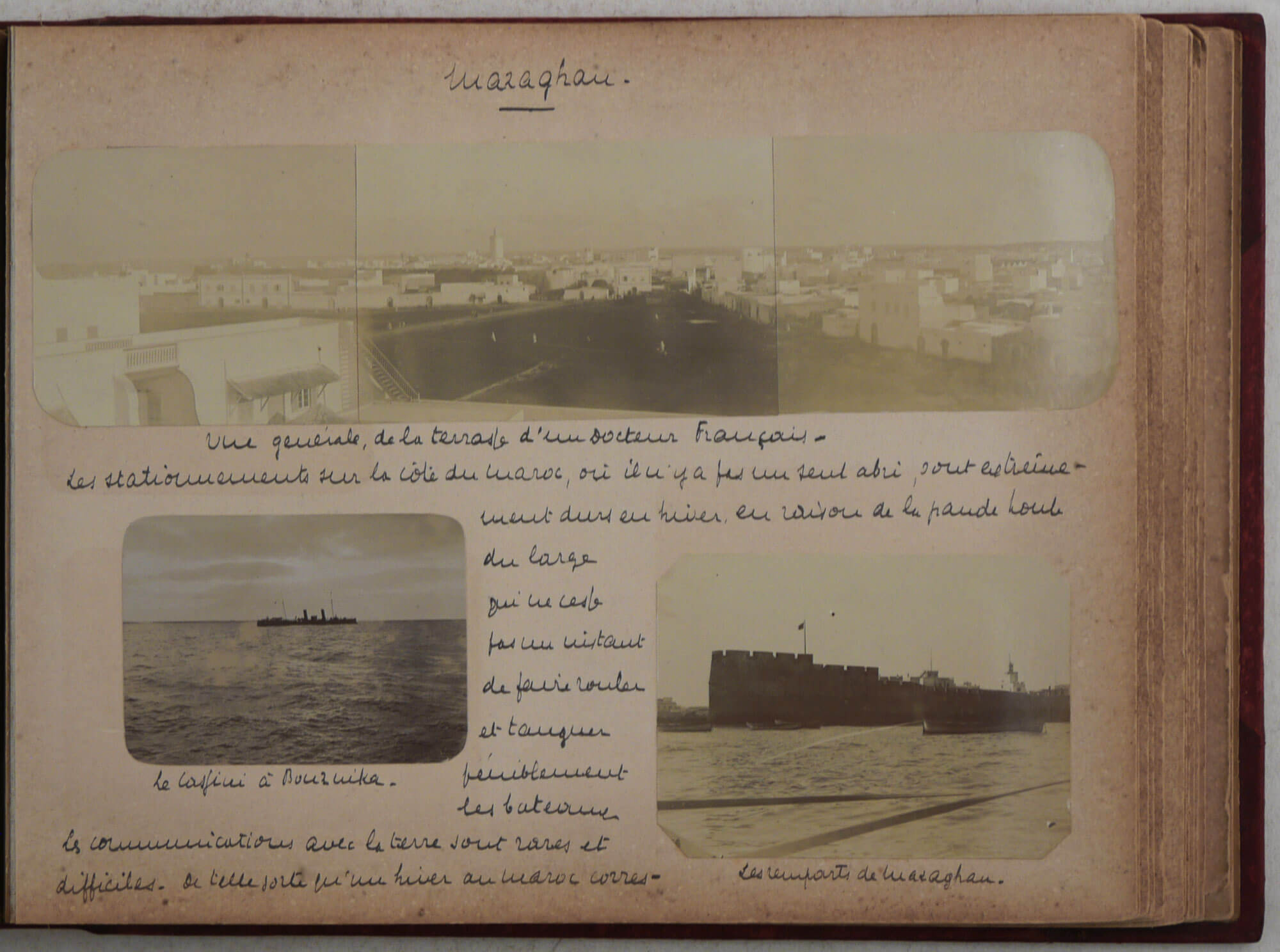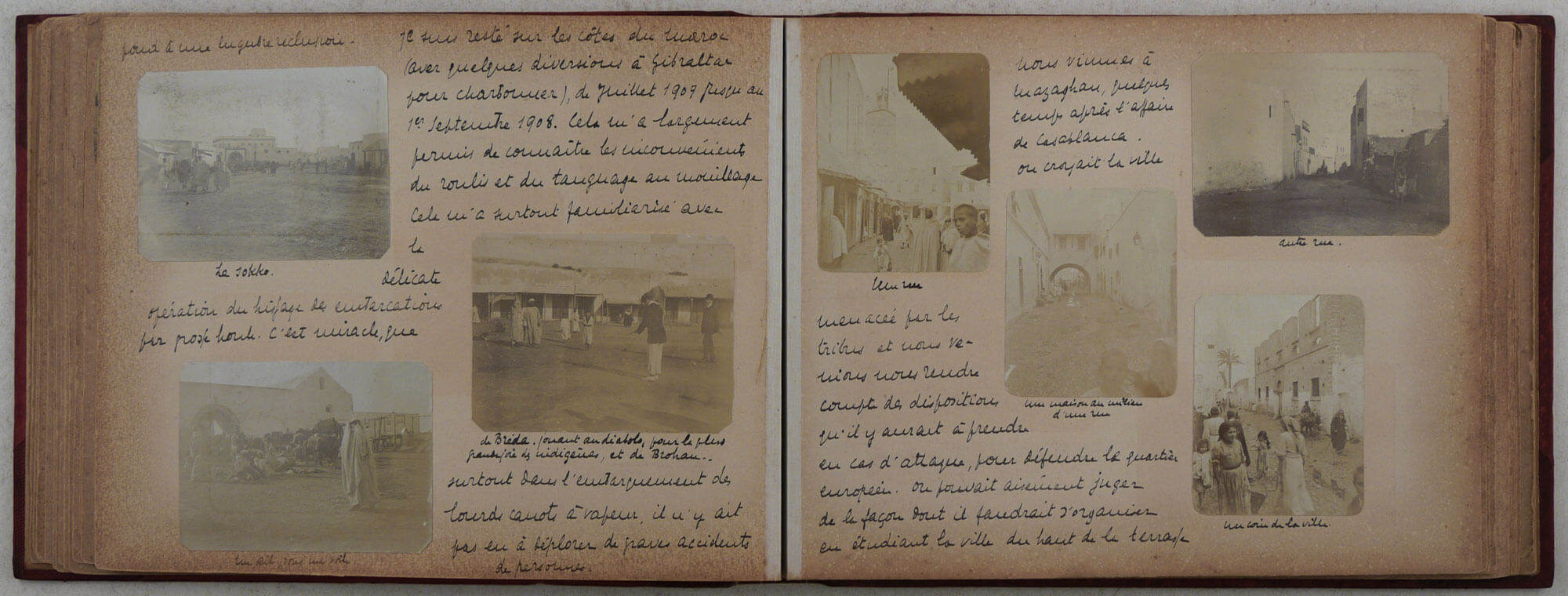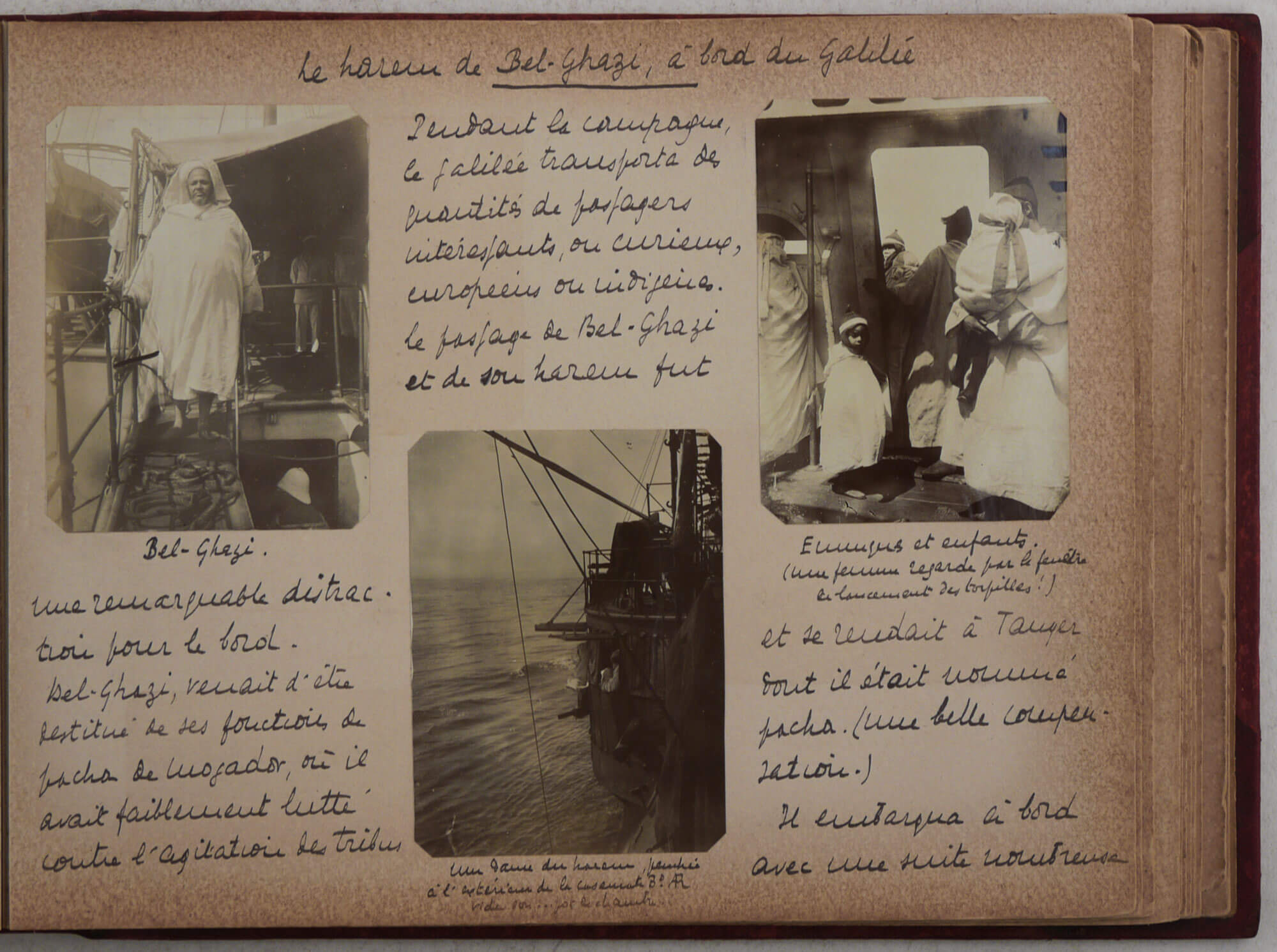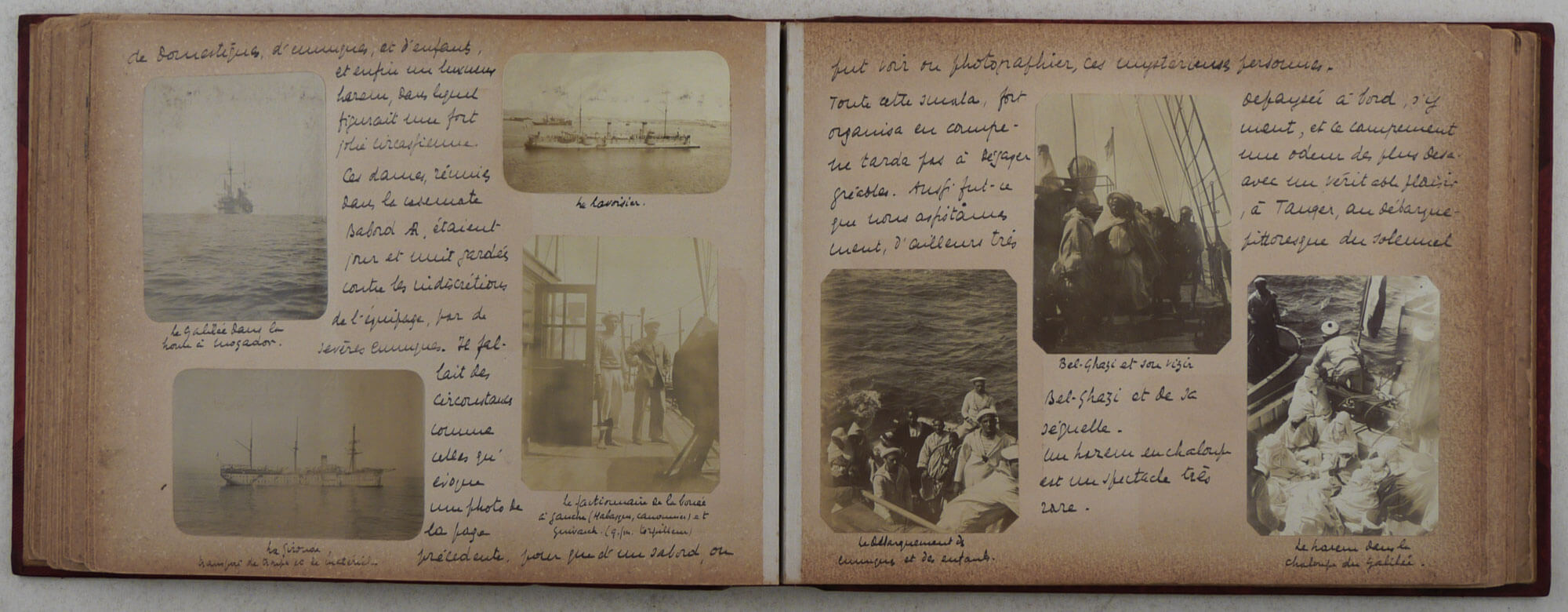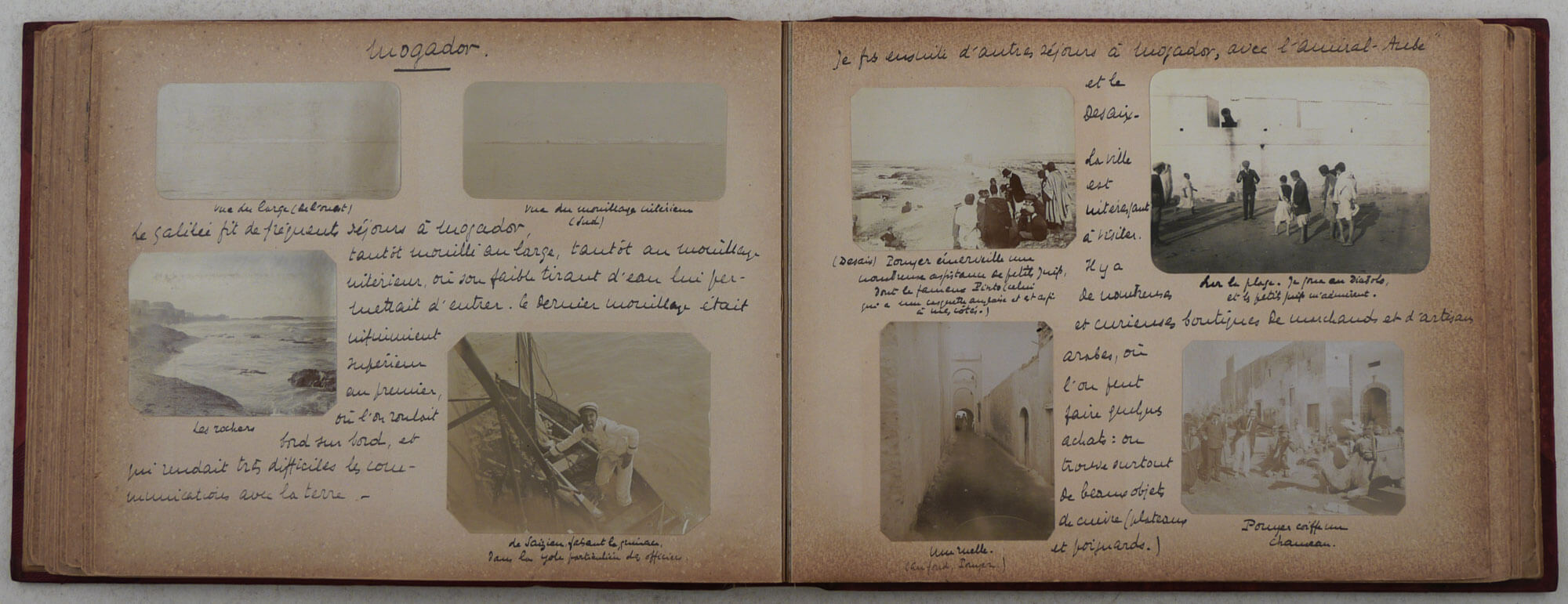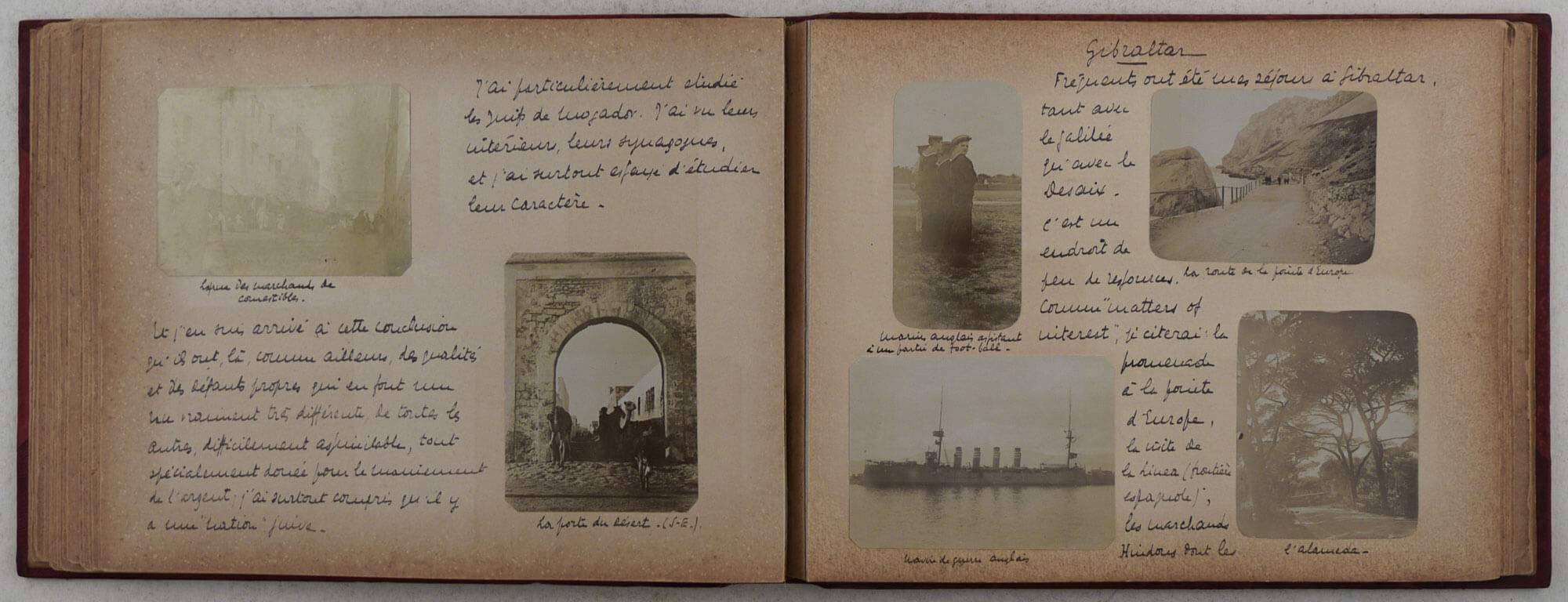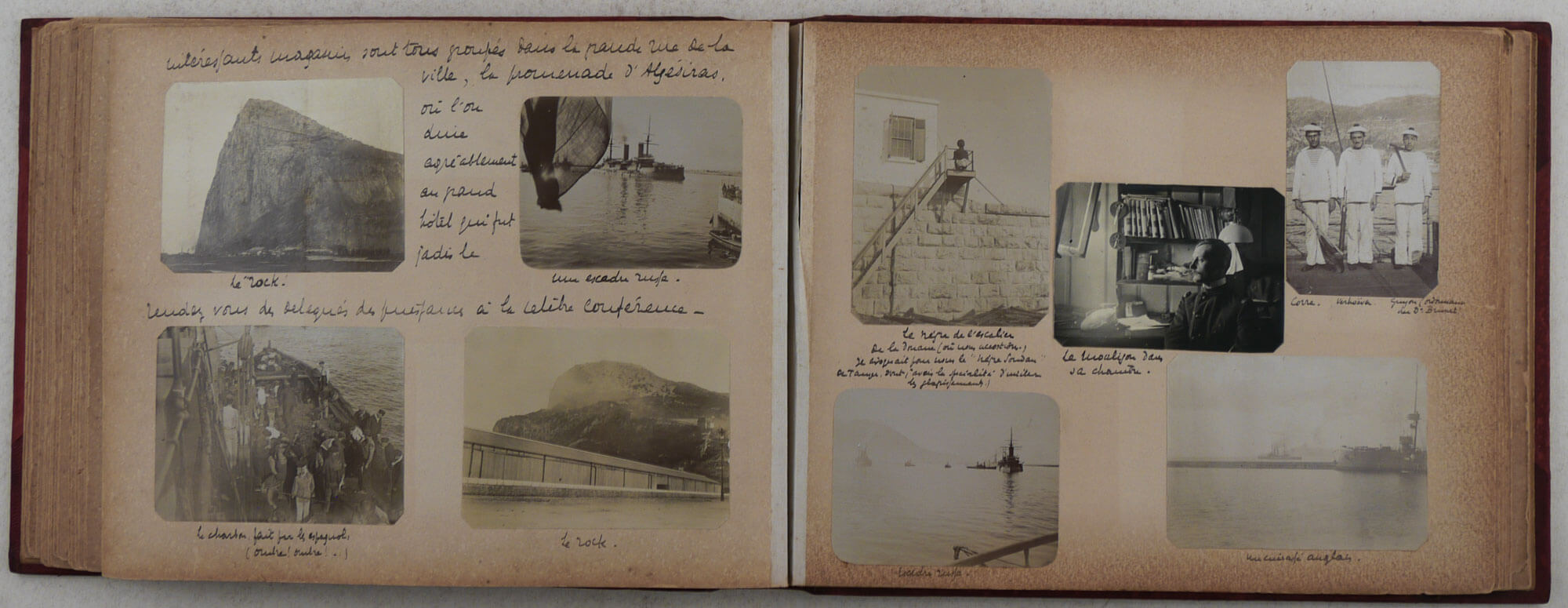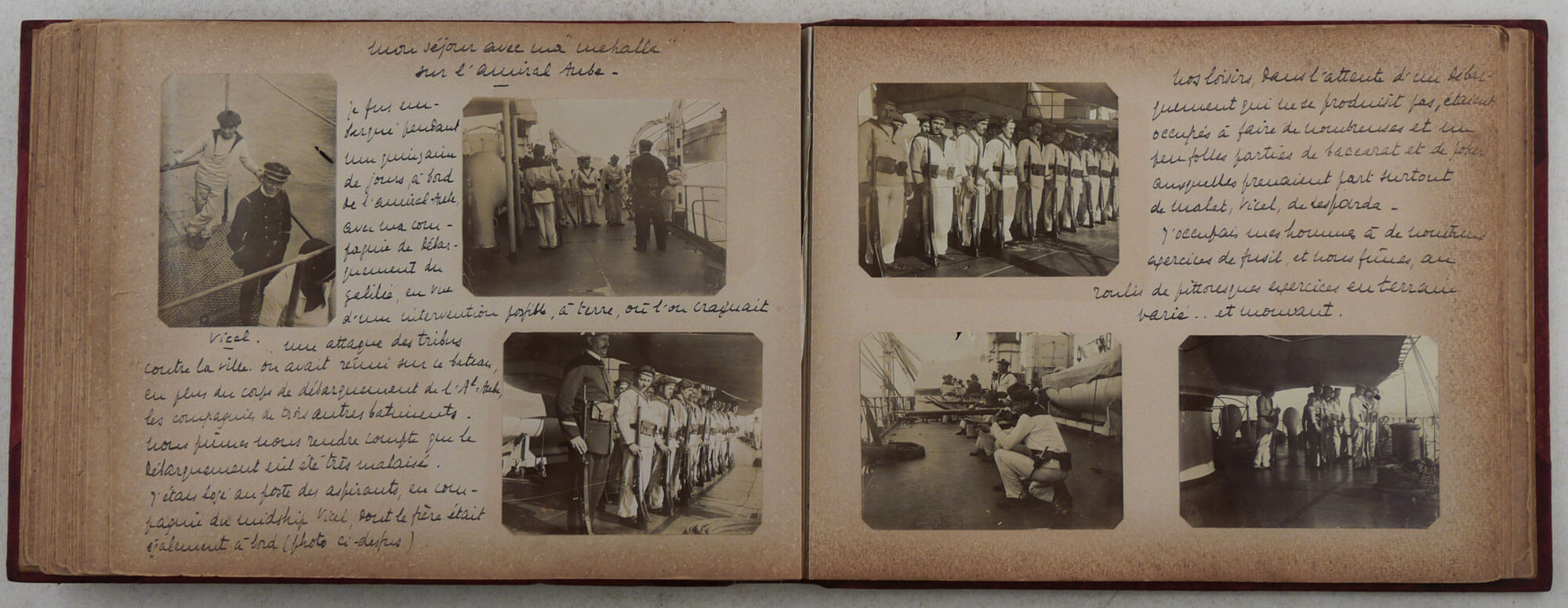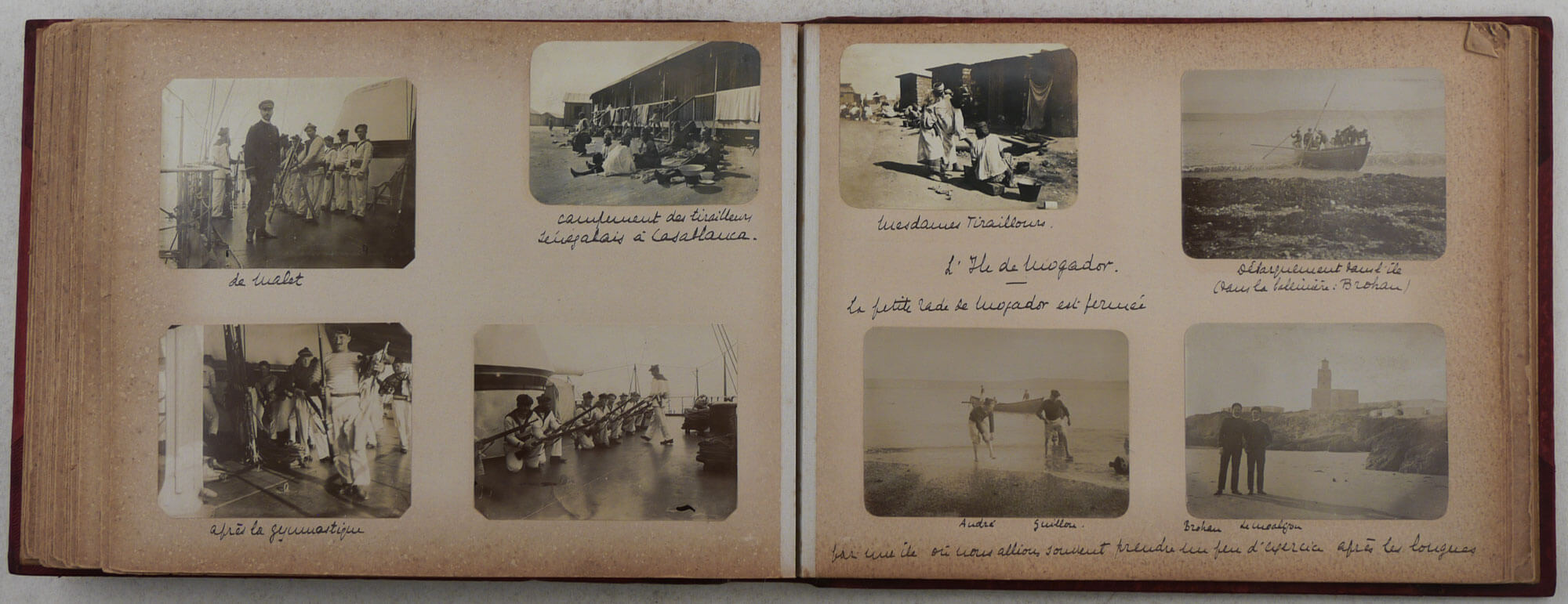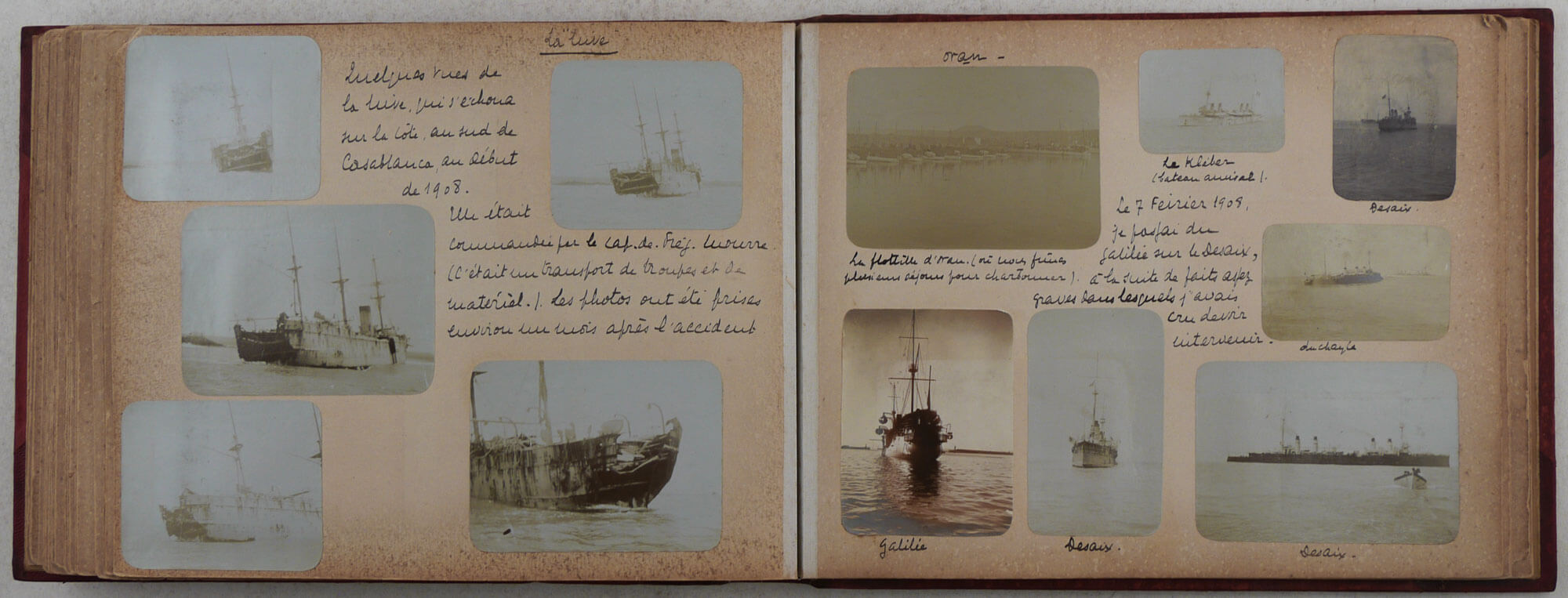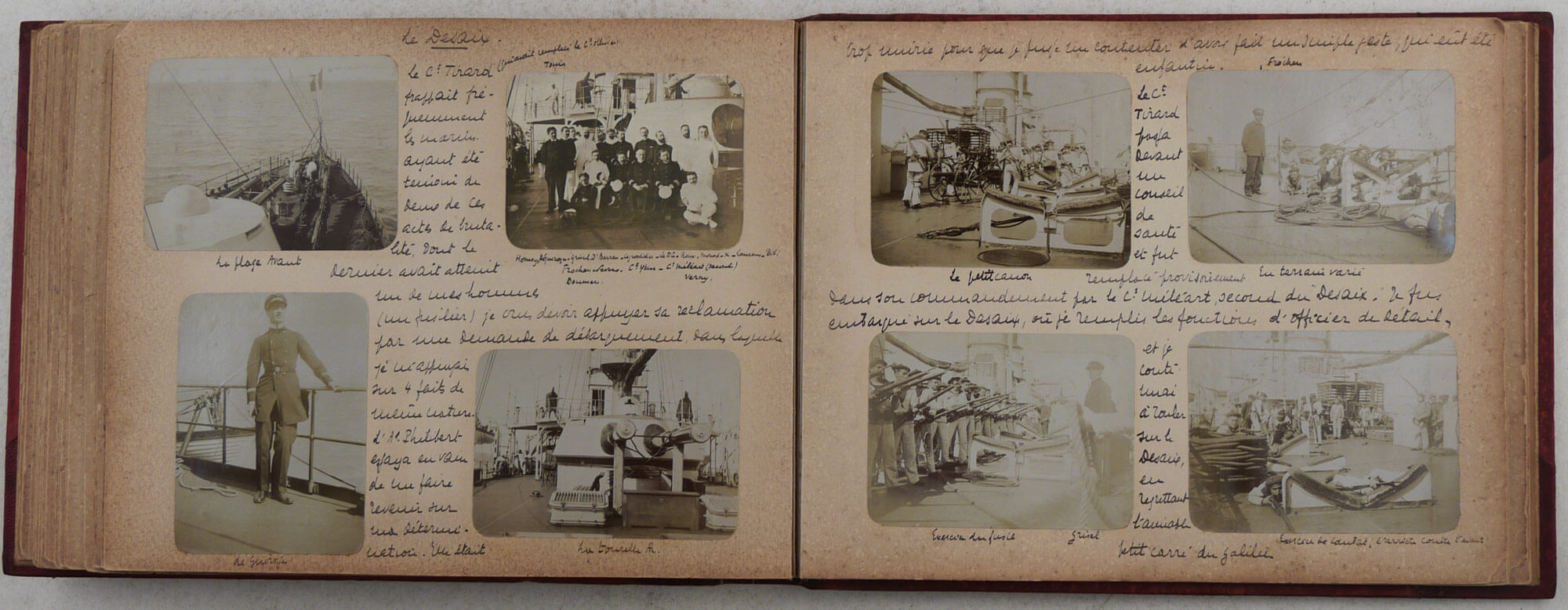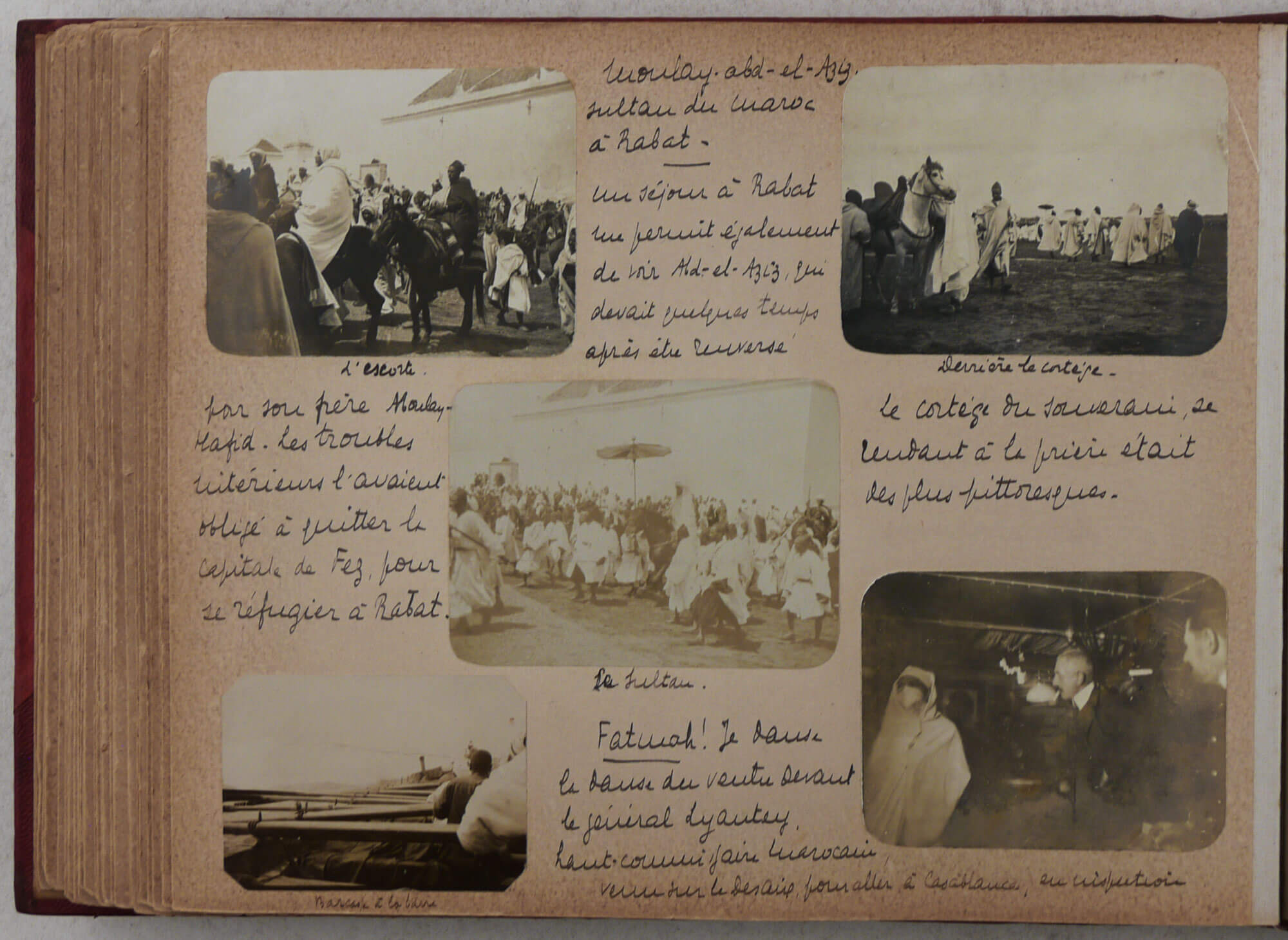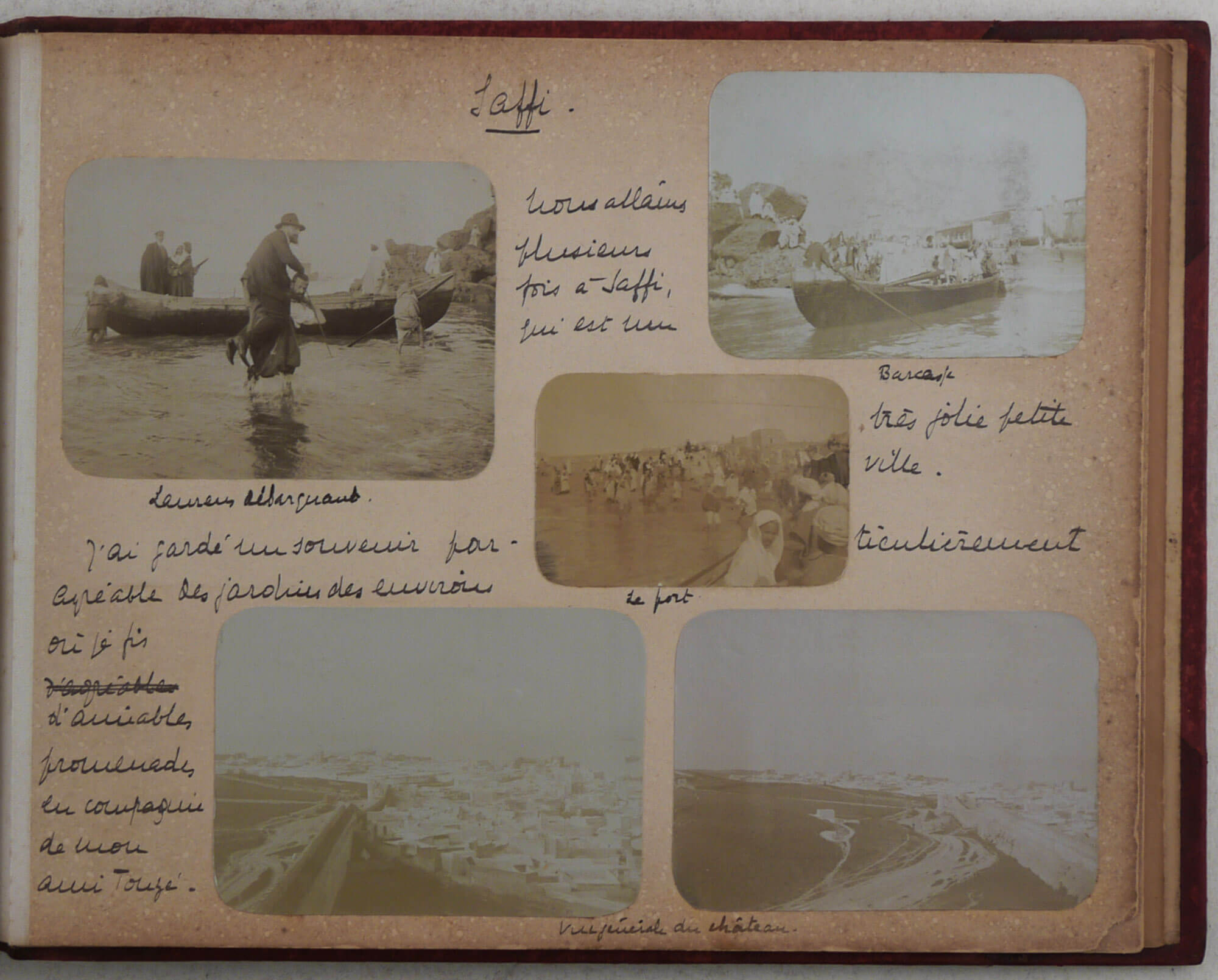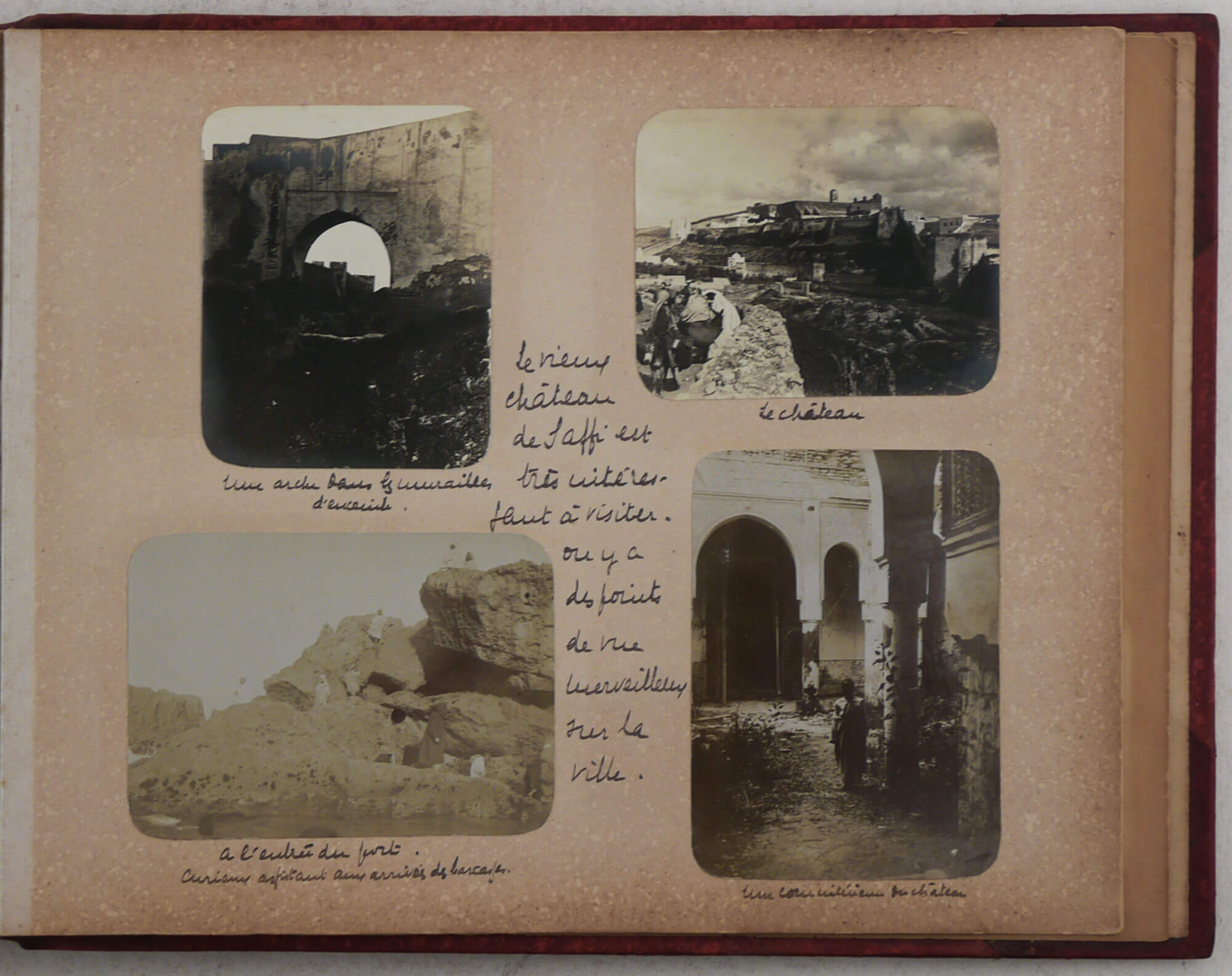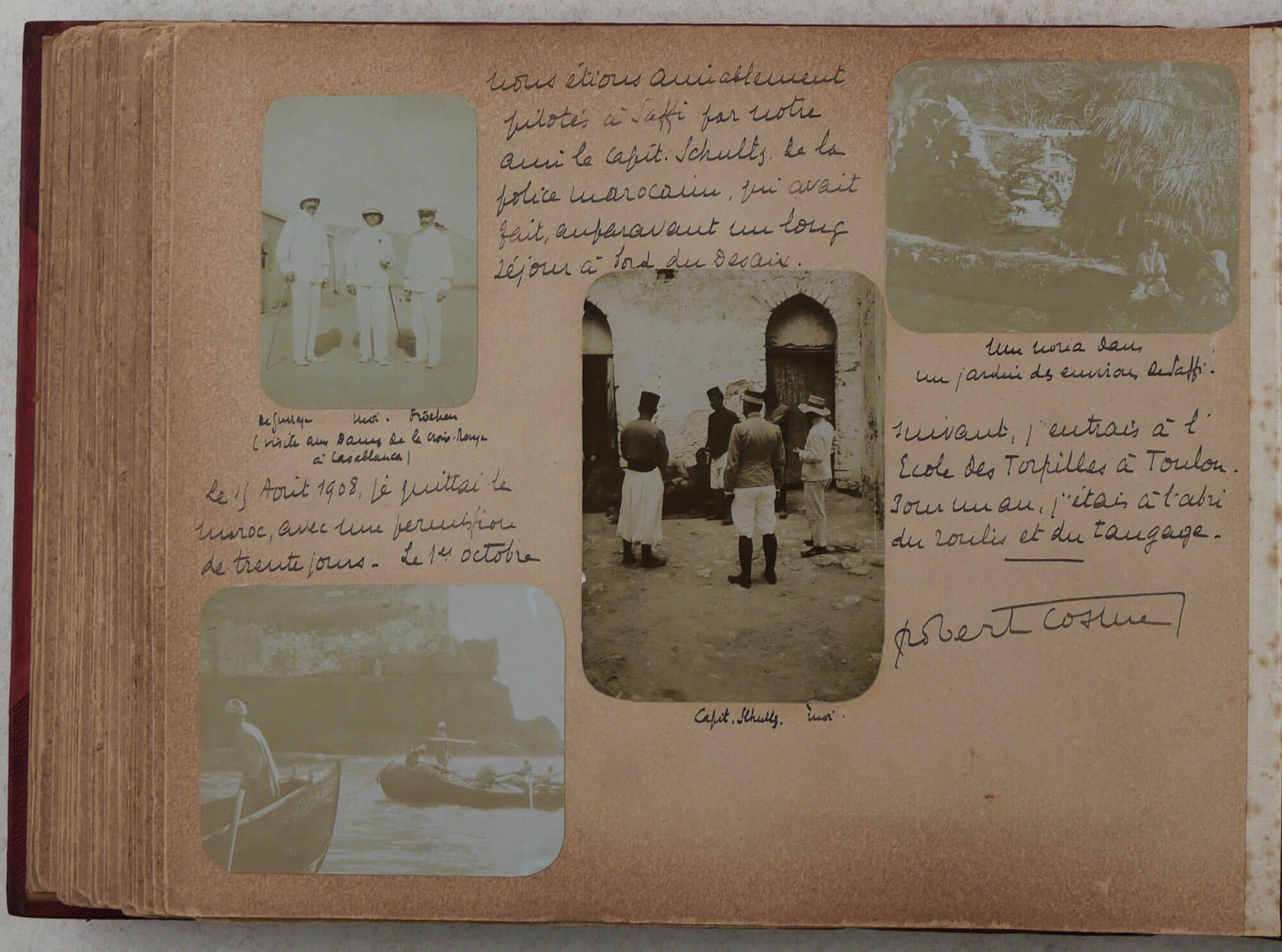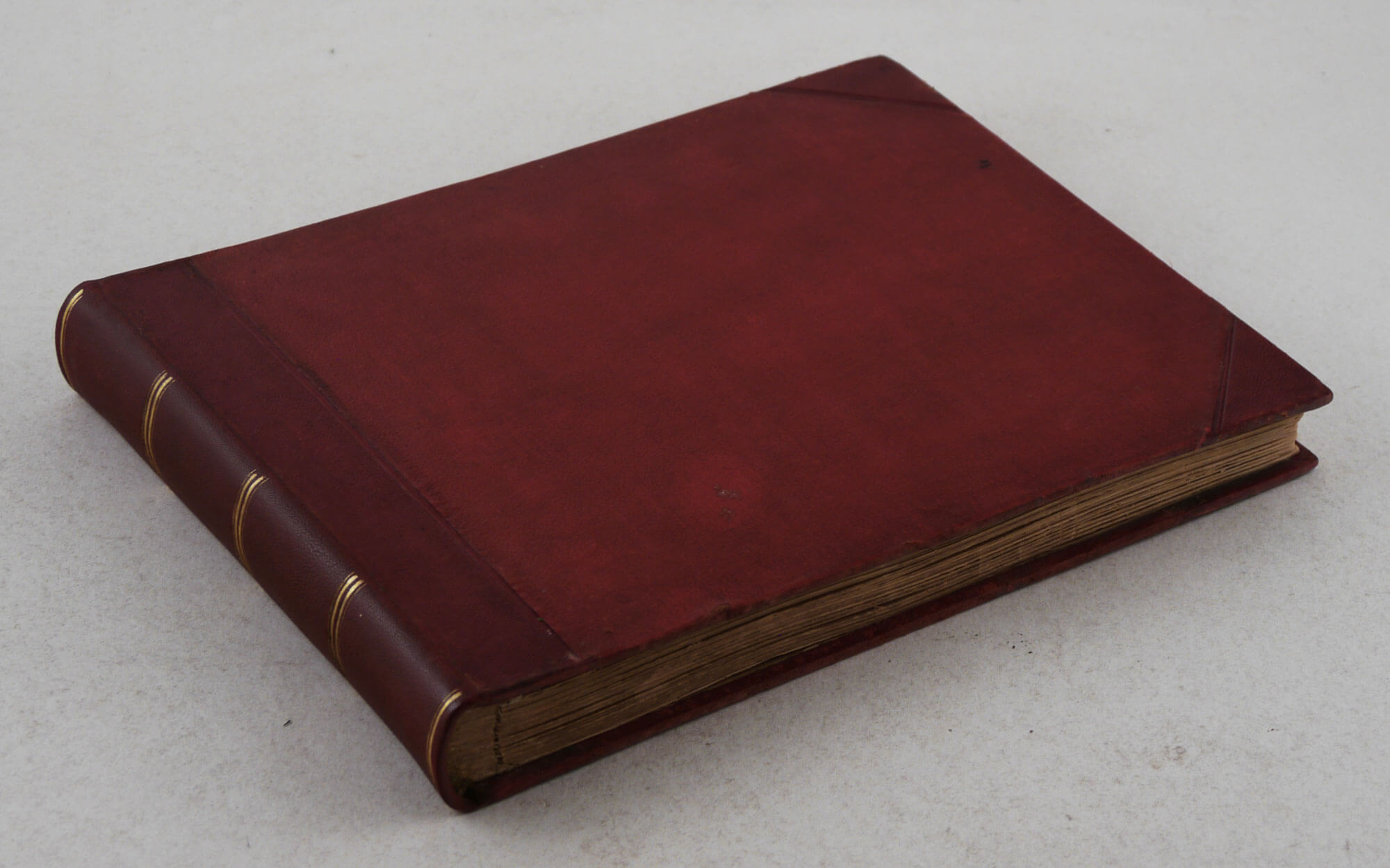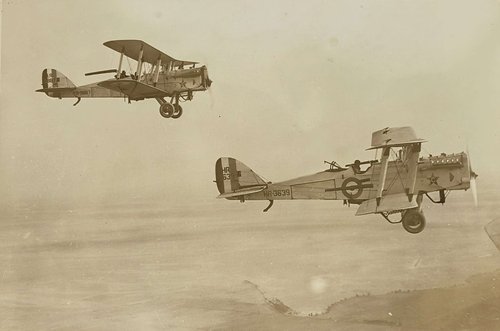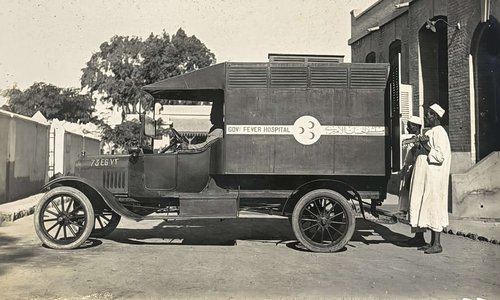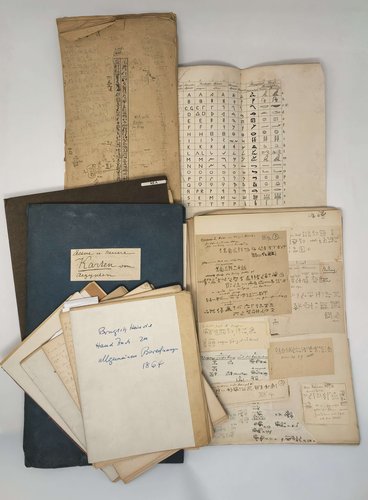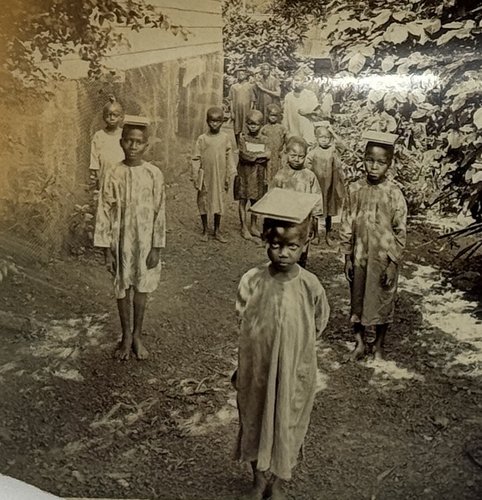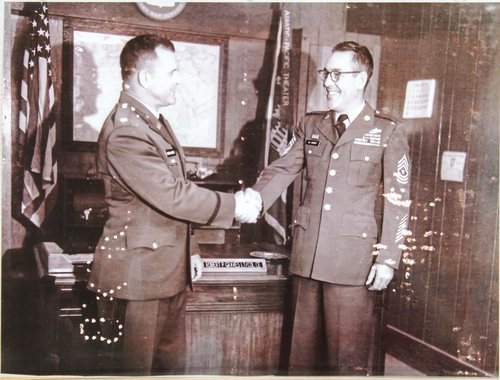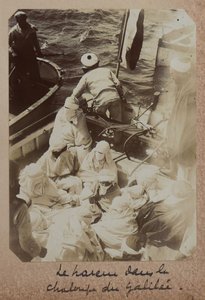

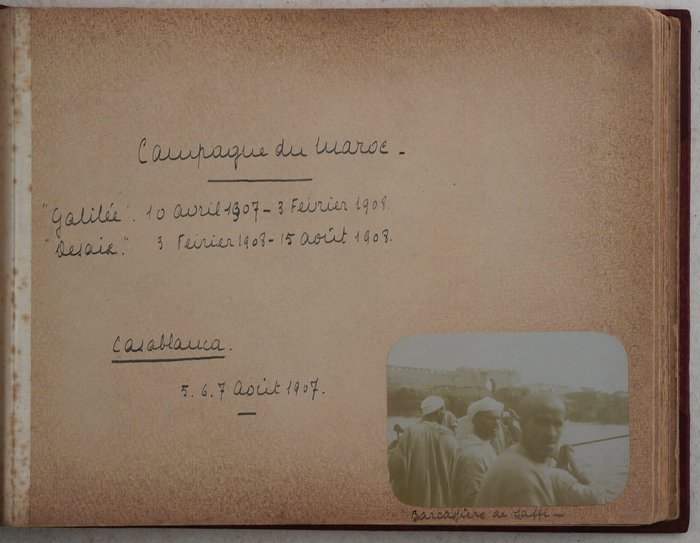
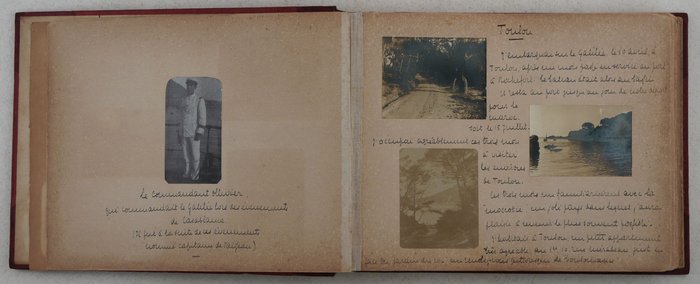

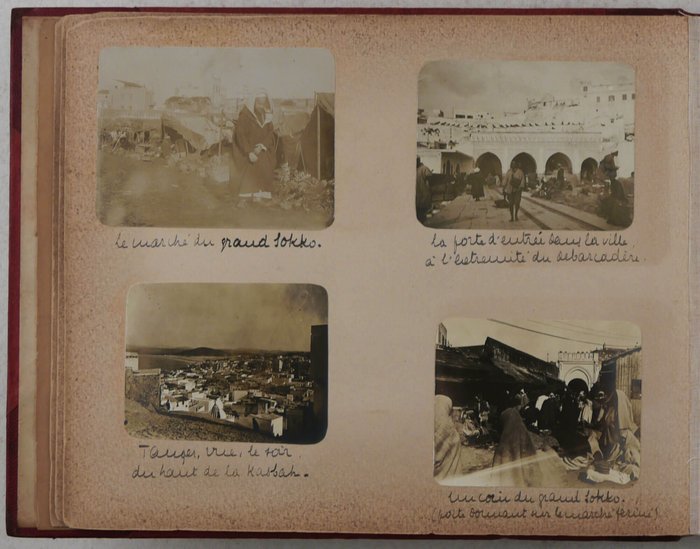
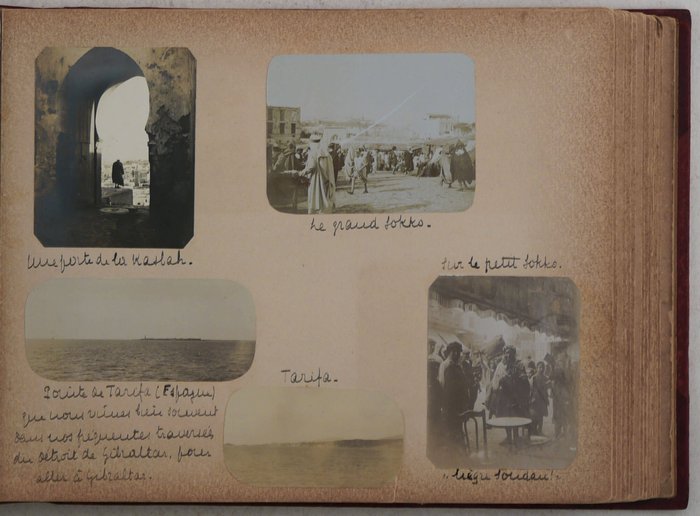
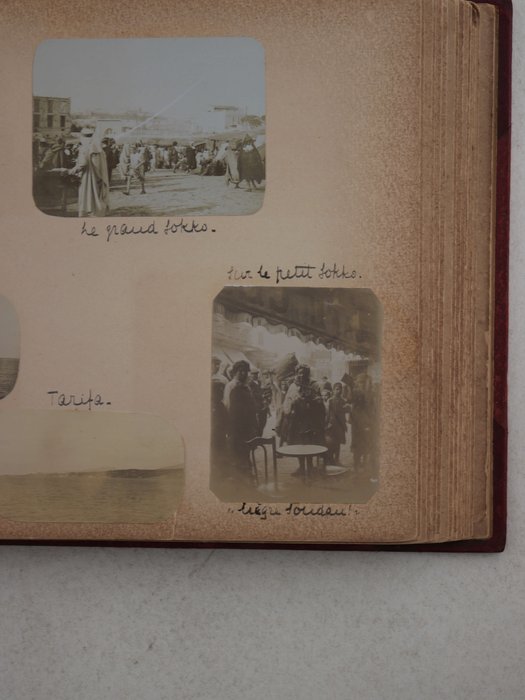
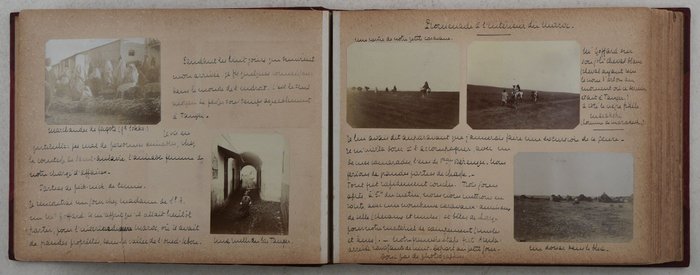
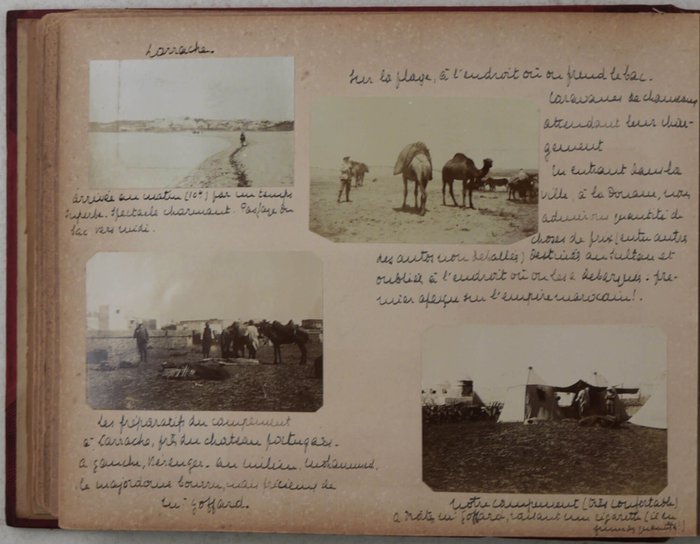
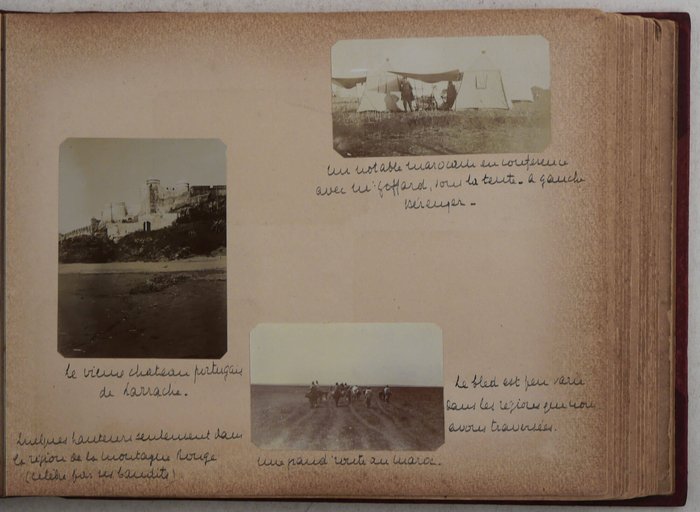
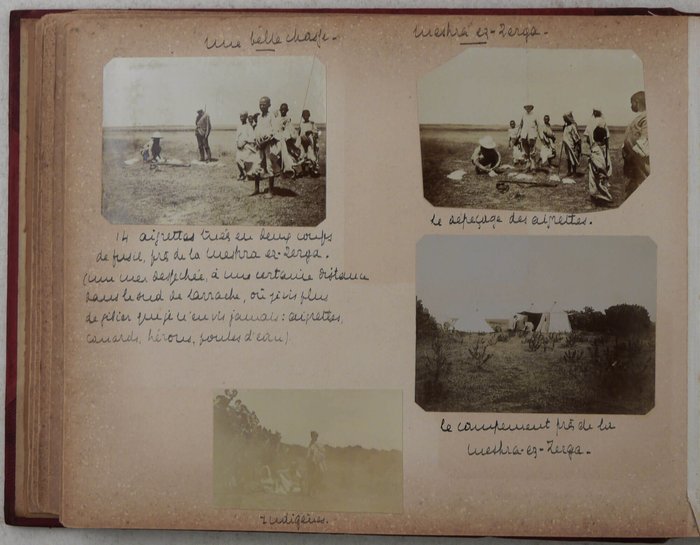
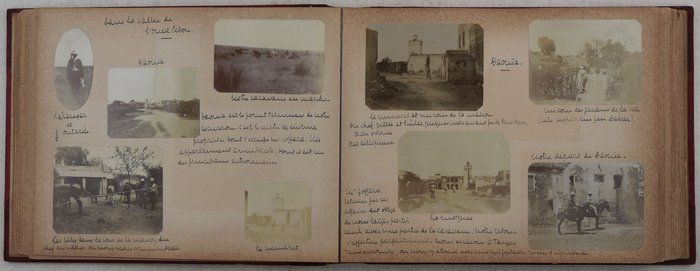
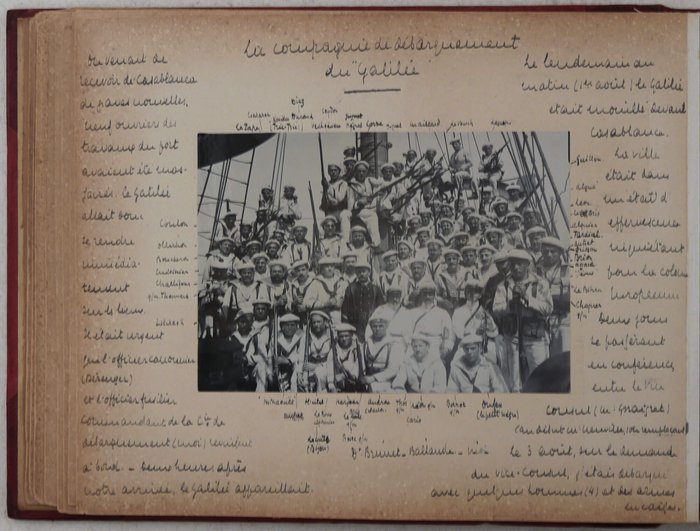
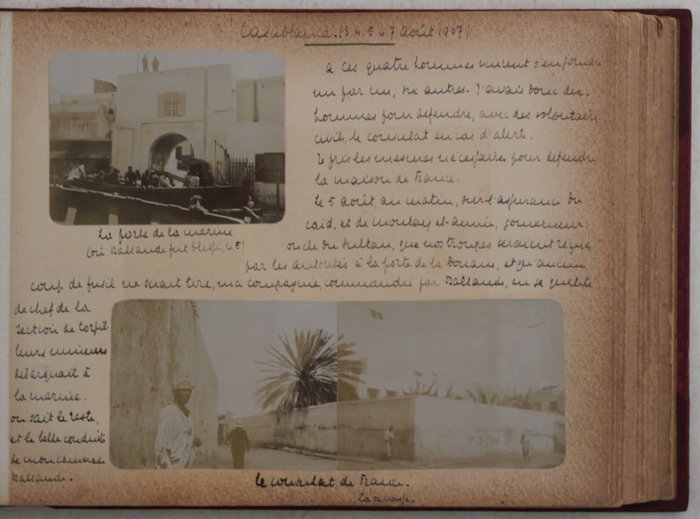
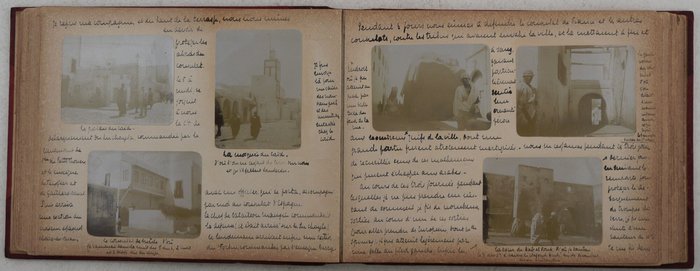
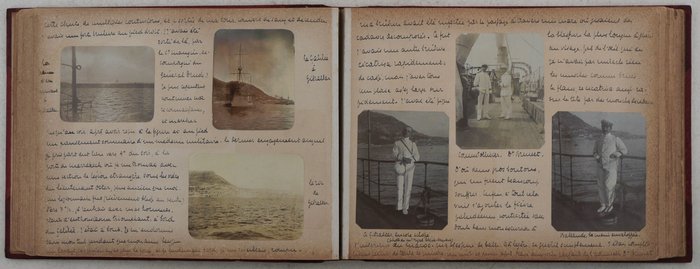
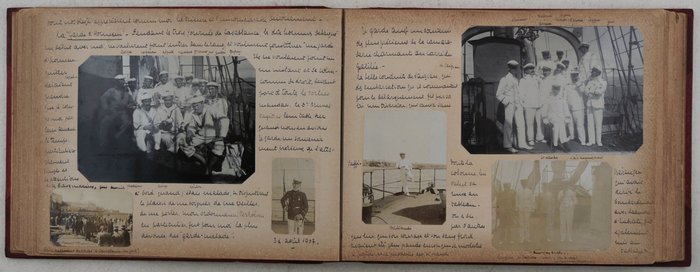
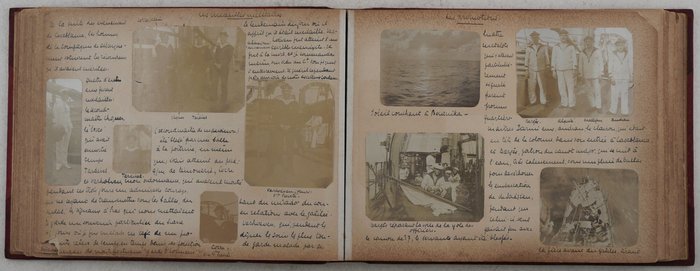

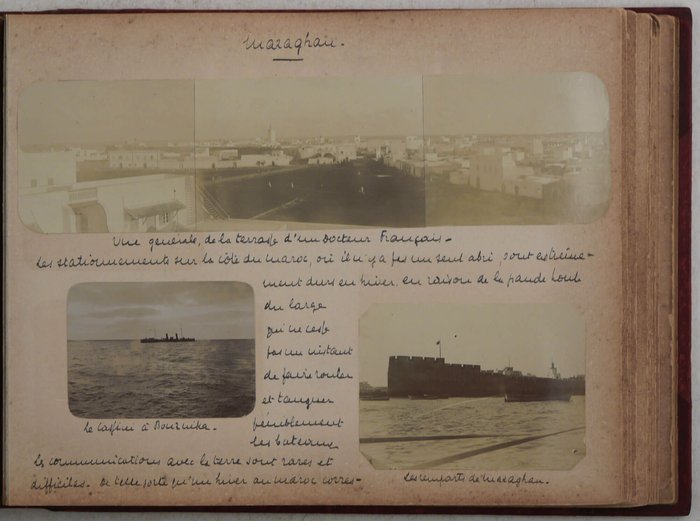
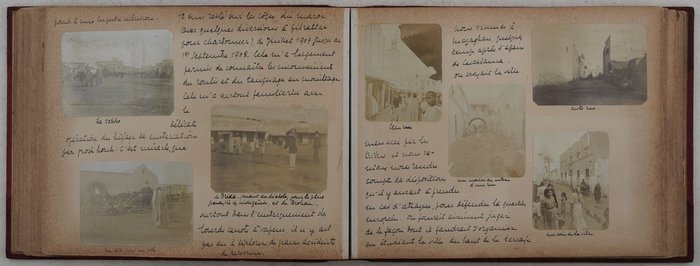
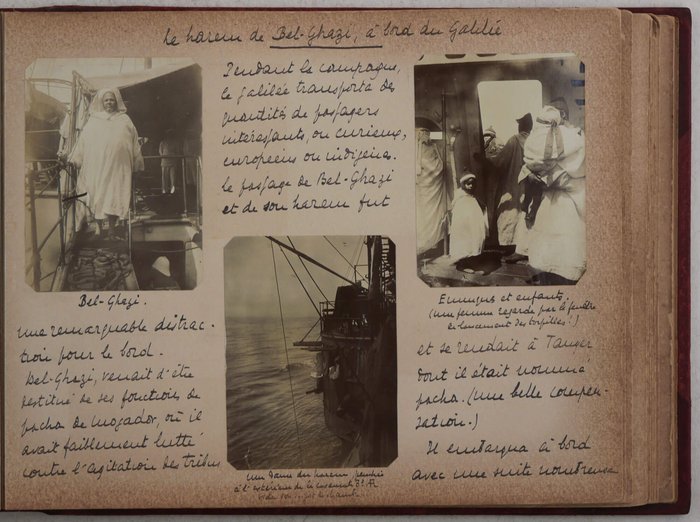
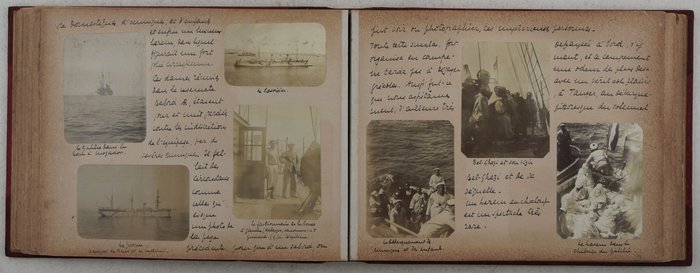
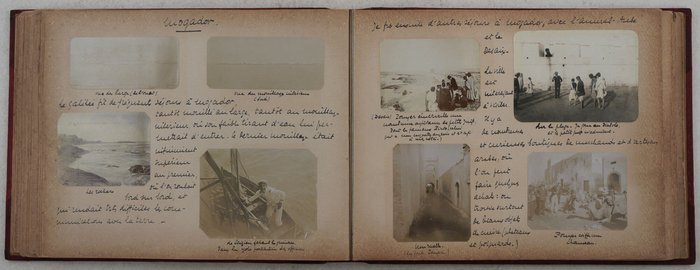

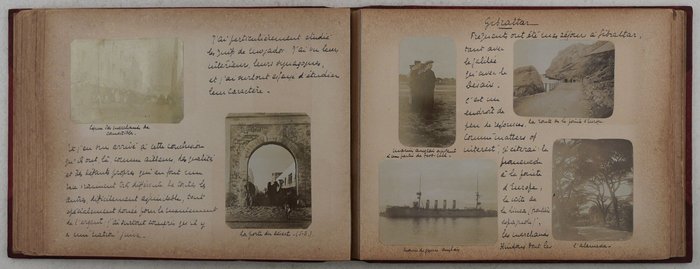

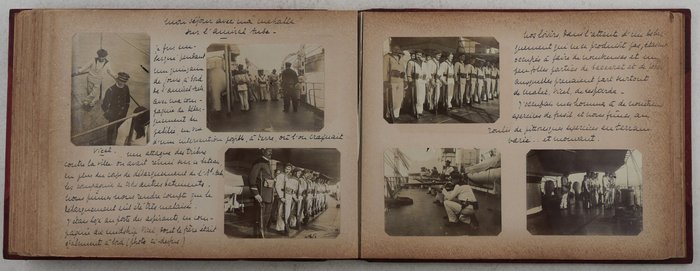
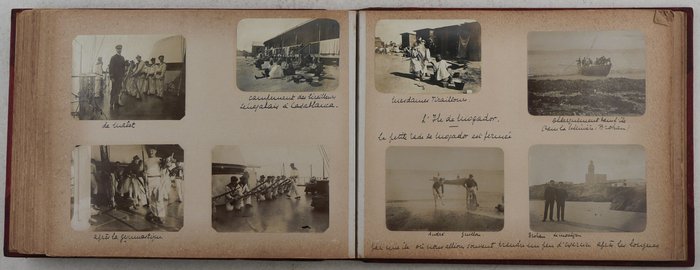
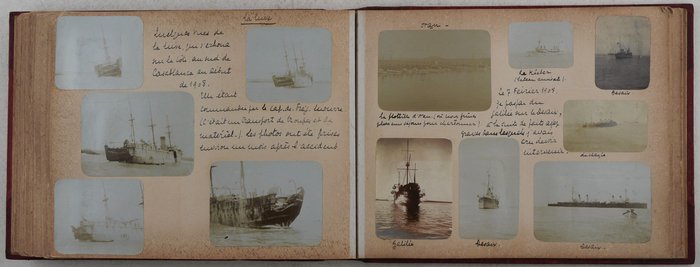
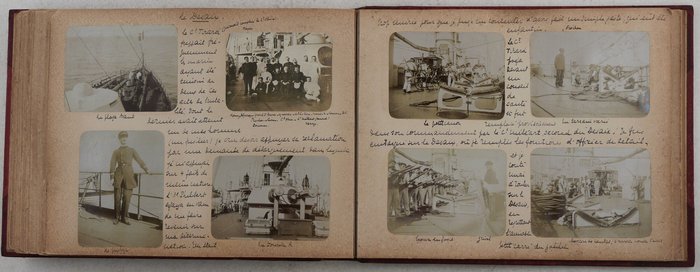
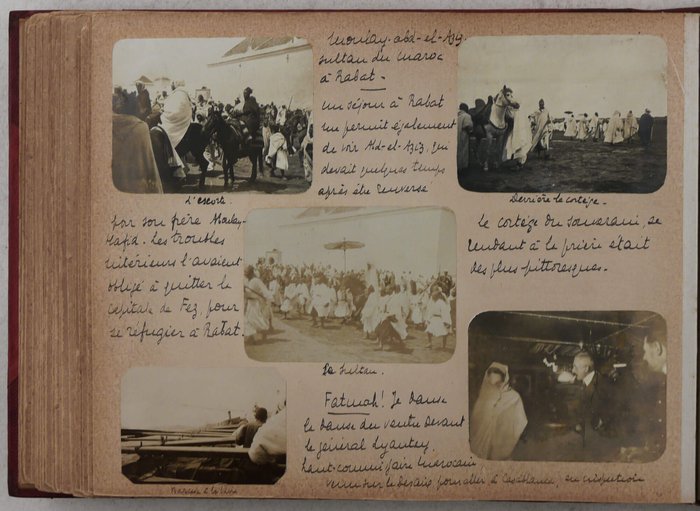

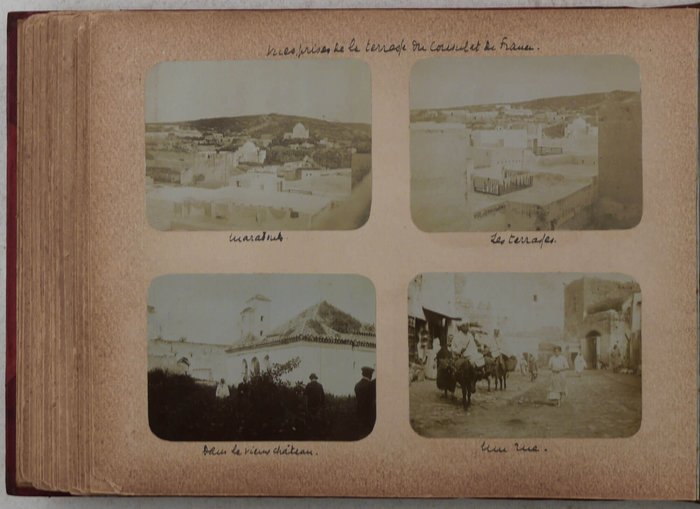

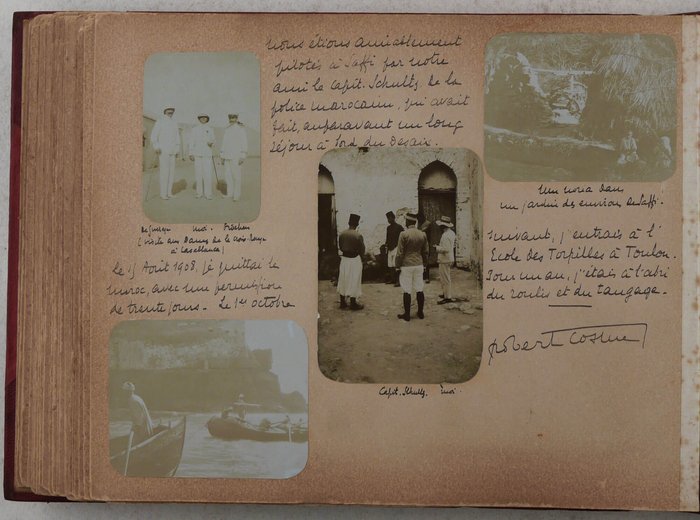
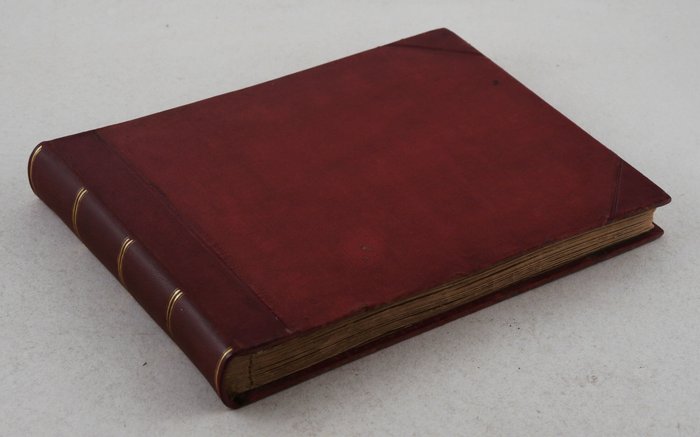
#PD41
Ca. 1907-1908
Oblong Folio (ca. 24 x 31 cm or 9 ¼ x 12 ¼ in). 30 cardstock leaves. Ca. 228 gelatin silver photographs (four loosely inserted) from ca. 17 x 11.5 cm (6 ¾ x 4 ½ in) to 4.5 x 3 cm (1 ¾ x 1 ¼ in), majority measuring ca. 10.5 x 8 cm (4 x 3 in). Two pieces of ephemera loosely inserted. All images with period ink captions in French on mounts. Period red half morocco album, gilt-tooled borders on spine, neatly rebacked in style. A few mounts with minor losses or tears not affecting images; a few photos mildly faded, but overall a very good album of interesting photos.
A collection of original gelatin silver photographs, compiled by one Robert Cosme, a naval officer, during his service on board the French cruisers Galilée (1893) and Desaix(1899) during the first year of the French Conquest of Morocco. The conquest began on 29 March 1907 and ended with the establishment of the French Protectorate in Morocco on 30 March 1912, with a series of pacification campaigns lasting until 1934. Cosme’s service lasted from 10 April 1907 to 15 August 1908, switching ships on 3 February 1908. He also participated in the Bombardment of Casablanca (5-7 August 1907). The captions in the album are extensive and provide detail to the events of his service.
Over 65 photographs depict Cosme’s naval service. There are photographs of both ships he served on, Galiléeand Desaix; portraits of those on board who received military decorations after the Bombardment of Casablanca, with several recipients identified; snapshots of combat exercises on the deck of the Desaix(with captions “The small canon,” “Rifle exercise,” “on varied terrain,” etc.); several group and individual portraits of the officers and crew of the Galiléeand Desaix, with members identified in the captions; and many snapshots of daily life on board.
Several photographs show Casablanca, after the bombardment. The Bombardment of Casablanca (5-7 August 1907) was a French naval attack on the city of Casablanca after warriors from the Chaouia took the city on 30 July. The Galiée was dispatched and arrived 1 August and disembarked a landing crew 5 August to protect the French consulate. With the landing crew in the city, an insurrection broke out. Once the French, Swedish, and Portuguese consulates were occupied, the French began to bombard Casablanca. Cosme writes about his role in the event with great detail, supplementing with photographs. They show the French and other European consulates, which he aided in defending, and other places relevant to his experience, including where he was “atteint legèrement [grazed?]” by a bullet on his left foot. Cosme also boarded the Amiral Aube (1901) with his company from the Galilée, on standby to intervene should an attack on a nearby city occur. In Cosme’s account of the event, supplemented by several photographs of his fellow men on deck, the landing never happened.
Of note is a series of photos and captions documenting the Pasha of Mogador, Bel-Ghazi, on board the Galilée, along with his harem, children, and servants. The photographs include snapshots of Bel-Ghazi and his vizir; women in the harem looking out of the ship’s windows; eunuchs and children boarding and disembarking the vessel; and the harem in the Galilée’s rowboat (which Cosme calls “a very rare spectacle”).
Additionally, several photographs show the sultan of Morocco, Abdelaziz (1881-1943, reigned 1894-1908), in Rabat, where he was trying to secure the support of European powers against his brother.
There are also several photographs of cities and environs in Morocco, including Tanger (Tangiers), Mazaghan (El Jadida), Mogador, Saffi (Safi), and Larrache (Larache). They include general views of Tanger with scenes from the Grand Sokko and Petit Sokko; panoramas of Mazaghan and scenes from its markets and streets; the streets of Mogador, with a snapshot of a Jewish porter; and general views of Safi and the city’s Portuguese fortress. A series of photographs and captions titled “Promenade à l’intérieur du Maroc” shows a tour taken by Cosme and a crewmate. Photographs include the caravan, campsites, their stop in Larrache (with photos of the Portuguese Graciosa fortress), and their terminus in “Daouia” (with photos of the recently wrecked and burned home of the chief of Daouia). The captions provide Cosme’s accounts of the “Promenade.”
The pieces of ephemera are a printed membership form for the AEN (Anciens élèves de l’École Navale [Naval Academy Alumni]) and a manuscript list.
Overall, an extensive and detailed account of a French naval officer’s service in Morocco from 1907 to 1908.

